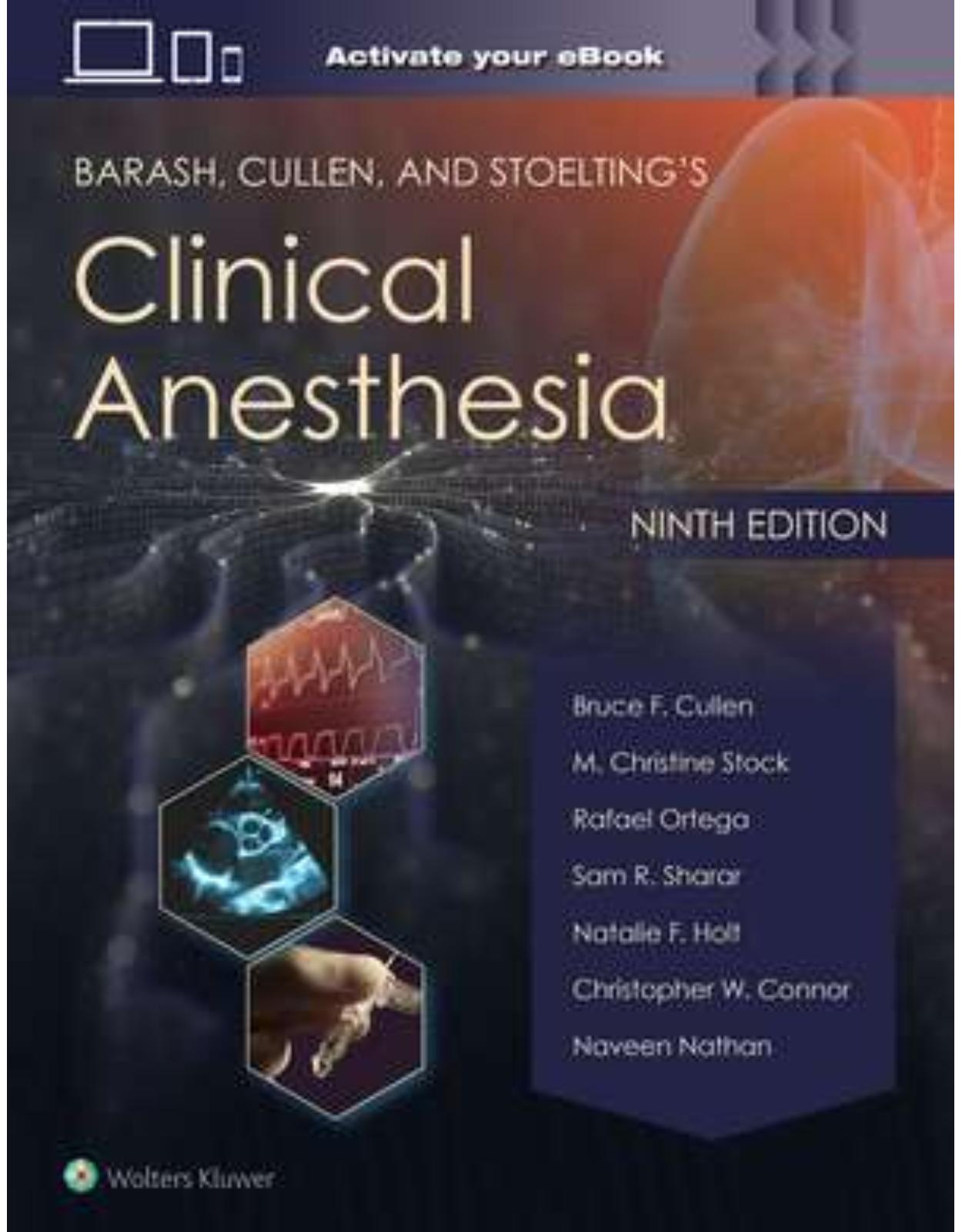
Barash, Cullen, and Stoelting’s Clinical Anesthesia
Livrare gratis la comenzi peste 500 RON. Pentru celelalte comenzi livrarea este 20 RON.
Disponibilitate: La comanda in aproximativ 4 saptamani
Editura: LWW
Limba: Engleza
Nr. pagini: 1728
Coperta: Hardcover
Dimensiuni: 213 x 276 mm
An aparitie: 26 oct 2023
Description:
Covering the full spectrum of clinical issues and options in anesthesiology, Barash, Cullen, and Stoelting’s Clinical Anesthesia, Ninth Edition, edited by Drs. Bruce F. Cullen, M. Christine Stock, Rafael Ortega, Sam R. Sharar, Natalie F. Holt, Christopher W. Connor, and Naveen Nathan, provides insightful coverage of pharmacology, physiology, co-existing diseases, and surgical procedures. This award-winning text delivers state-of-the-art content unparalleled in clarity and depth of coverage, as well robust multimedia features that equip you to effectively apply today’s standards of care and make optimal clinical decisions on behalf of your patients.
Table of Contents:
Multimedia Contents
Section 1: Introduction and Overview
1. The History of Anesthesia
Anesthesia Before Ether
Physical and Psychological Anesthesia
Early Analgesics and Soporifics
Inhaled Anesthetics
Almost Discovery: Hickman, Clarke, Long, and Wells
Public Demonstration of Ether Anesthesia
Chloroform and Obstetrics
Anesthesia Principles, Equipment, and Standards
Control of the Airway
Tracheal Intubation
Advanced Airway Devices
Early Anesthesia Delivery Systems
Alternative Circuits
Ventilators
Carbon Dioxide Absorption
Flowmeters
Vaporizers
Patient Monitors
Electrocardiography, Pulse Oximetry, and Capnography
Safety Standards
The History of Anesthetic Agents and Adjuvants
Inhaled Anesthetics
Intravenous Anesthetics
Local Anesthetics
Opioids
Muscle Relaxants
Antiemetics
Anesthesia Subspecialties
Regional Anesthesia
Cardiovascular Anesthesia
Pediatric Anesthesia
Neuroanesthesia
Obstetric Anesthesia
Transfusion Medicine
Professionalism and Anesthesia Practice
Organized Anesthesiology
Academic Anesthesiology
Establishing a Society
Conclusions
2. The Practice of Anesthesiology
Introduction
The Practice of Anesthesiology
The Value of Anesthesiologists
Perioperative Surgical Home
Enhanced Recovery after Surgery
Practice Parameters: Standards, Guidelines, and Advisories
Operating Room Management
Physician Executive Roles and Additional Training
Advocacy/Participation
Accreditation, Training, and Certification
Initial Certification
Maintenance of Certification
Financial Aspects of Anesthesia Practice
Introduction
Basics of Anesthesia Billing and Reimbursement
Coding
Billing
Medical Direction and the Anesthesia Care Team Model
What are Medical Direction and Medical Supervision?
Who are “Qualified Individuals”?
Payment for Anesthesia Care
How Does Medical Direction or Supervision Affect Reimbursement?
Government versus Commercial Insurance Payments
Balance Billing and the No Surprises Act
Summary and Future Directions
Quality and Safety
Regulatory
Center for Medicare and Medicaid Services
The Joint Commission
Health Insurance Portability and Accountability Act
State Regulations
Conclusion
Support
Employment Markets
Choosing a Practice
Life Outside of Clinical Practice
Wellness and Burnout
Financial Wellness
Debt Burden and Debt Repayment
Savings, Budgeting, and Retirement Planning
Protecting Assets: Insurance
The Future
Global and Public Health
Green or “Clean” Anesthesia
Artificial Intelligence and the Future of Anesthesia Care
Conclusion
3. Occupational Health and Well-Being
Introduction
Physical Hazards
Ergonomics
Inhalation Anesthetics
Levels of Waste Anesthetic Gases
Health Consequences of WAG Exposure
Surgical Smoke
Radiation
Noise
Interpersonal Issues
Night Call, Sleepiness, and Fatigue
Substance Use Disorders
Infectious Hazards
Standard and Transmission-Based Precautions
Respiratory Viruses
Influenza Viruses
Avian Influenza A
Human Respiratory Syncytial Virus
Severe Acute Respiratory Syndrome
Enteric Infections
DNA Viruses
Rubella
Measles (Rubeola)
Viral Hepatitis
Pathogenic Human Retroviruses
Risk of Occupational HIV Infection
Postexposure Treatment and Prophylactic Antiretroviral Therapy
Prion Diseases
Tuberculosis
Impairment and Disability
The Aging Anesthesiologist
Mortality Among Anesthesiologists
Suicide
Psychological Considerations
Stress
Impact of Adverse Events
Well-Being, Burnout, and Workplace Culture
Burnout
Well-Being
Nutrition, Diet, and Fitness
Mindfulness
Creating a Culture of Support
Conclusion
4. Anesthetic Risk, Quality Improvement, and Liability
Anesthesia Risk
Mortality and Major Morbidity Related to Anesthesia
Risk Management
Conceptual Introduction
Risk Management in Anesthesia
Informed Consent
Record Keeping
What to Do After an Adverse Outcome
Special Circumstances: “Do Not Resuscitate”
National Practitioner Data Bank
Quality Improvement and Patient Safety in Anesthesia
Structure, Process, and Outcome: The Building Blocks of Quality
Continuous Quality Improvement
Tracking Adverse Events for Anesthesia CQI Programs
Joint Commission Requirements for Quality Improvement
Alternative Payment Models and Pay for Performance
Clinical Outcomes Registries in Anesthesiology
Professional Liability
The Tort System
Duty
Breach of Duty
Causation
Damages
Standard of Care
Causes of Anesthesia-Related Lawsuits
What to Do When Sued
Acknowledgments
5. Electrical Safety and Fires in the Operating Room
Fundamental Principles of Electricity
Electrical Circuits with Oscillating Voltages
Electrical Shock
Causes of Electric Shock
Grounded Electrical Power
Common Safety Features of a Grounded Electrical Power System
Power Receptacles
Ground-Isolated Electrical Power
The Line Isolation Monitor
Microshock
Safety Features within Monitors
Electrosurgery
Electromagnetic Interference
Emergency Backup Power
Regulations and Building Codes
Operating Room Fires
American Society of Anesthesiologists Fire Prevention Practice Advisory
Fire Triangle/Tetrahedron
Flammability, Oxygen Concentration, Gas Density, and Nitrous Oxide
Assessing Fire Risk during the Presurgical Timeout
OR Fires and Lessons from Closed Claims and Review Findings
Why Is 2 L/min O2 via Nasal Cannula or Face Mask Not Safe for High–Fire-Risk Cases?
On-Patient versus In-Patient Fires
Airway Fires
Laser-Related Airway Fires
Tracheostomy Fires
Tonsillectomy Fires
Eye Surgery Fires
Abdominal Surgery/Colonoscopy Fires
Thoracic Surgery Fires
Electrical Equipment Fire
Fire Prevention
Fire Response
Section 2: Basic Science and Fundamentals
6. Genomic Basis of Perioperative Precision Medicine
Scientific Rationale for Perioperative Precision Medicine
Human Genomic Variation
Profiling the Regulatory Genome to Understand Perioperative Biology and Discover Biomarkers of Organ Injury and Adverse Outcomes
Epigenetics: The Link between Environment and Genes
Overview of Genetic Epidemiology and Functional Genomic Methodology
Genomics and Perioperative Risk Profiling
Predictive Biomarkers for Perioperative Adverse Cardiac Events
Perioperative Myocardial Infarction and Ventricular Dysfunction
Perioperative Atrial Fibrillation
Genetic Variants and Postoperative Event-Free Survival
Genetic Susceptibility to Adverse Perioperative Neurologic Outcomes
Genetic Susceptibility to Adverse Perioperative Kidney Outcomes
Genetic Variants and Risk for Postoperative Acute Lung Injury
Pharmacogenomics and Anesthesia
Genetic Variability in Response to Anesthetic Agents
Genetic Variability in Pain Response
Genetic Variability in Response to Other Drugs Used Perioperatively
Conclusions and Future Directions
7. Experimental Design and Statistics
Introduction
Foundations
Data Structure
Descriptive Statistics
Central Location
Spread or Variability
Types of Research Design
Experimental Medicine: Management of Bias
Sampling
Experimental Constraints
Control Groups
Random Allocation of Treatment Groups
Blinding
Experimental Medicine: Data Analysis
Null Significance Hypothesis Test Formulation
Logic of Proof
Sample Size Calculations
Sample Test Statistics
The Fickle P Value
The Bayesian Alternative
Experimental Medicine: Statistical Tests
Interval Data
Confidence Intervals
t-Test
Analysis of Variance
Robustness and Nonparametric Tests
Binary Variables
Confidence Intervals on Proportions
Hypothesis Testing
Linear Regression
Epidemiology
Multivariable Linear Regression
Univariable and Multivariable Logistic Regression
Propensity Score Matching and Analysis
Systematic Reviews and Meta-Analyses
Big Data
Conclusions
Interpretation of Results
Statistical Resources
Statistics and Anesthesia
8. Inflammation, Wound Healing, and Infection
Introduction
Infection Control
Hand Hygiene
Antisepsis
Role of Single-Use Disposables in Infection Control
Antibiotic Prophylaxis
Mechanisms of Wound Repair
The Initial Response to Injury
Resistance to Infection
Proliferation
Neovascularization
Collagen and Extracellular Matrix Deposition
Epithelialization
Maturation and Remodeling
Wound Perfusion and Oxygenation
Patient Management
Preoperative Preparation
Intraoperative Management
Volume Management
Postoperative Management
Summary
9. The Allergic Response
Introduction
Basic Immunologic Principles
Antigens
Thymus-Derived (T-cell) and Bursa-Derived (B-cell) Lymphocytes
Antibodies
Effector Cells and Proteins of the Immune Response
Cells
Proteins
Effects of Anesthesia on Immune Function
Hypersensitivity Responses (Allergy)
Type I Reactions
Type II Reactions
Type III Reactions (Immune Complex Reactions)
Type IV Reactions (Delayed Hypersensitivity Reactions)
Intraoperative Allergic Reactions
Anaphylactic Reactions
IgE-Mediated Pathophysiology
Molecular Mediators of Anaphylaxis
Peptide Mediators of Anaphylaxis
Arachidonic Acid Metabolites
Kinins
Platelet-Activating Factor
Recognition of Anaphylaxis
Non–IgE-Mediated Reactions
Complement Activation
Nonimmunologic Release of Histamine
Treatment Plan
Initial Therapy
Secondary Treatment
Perioperative Management of the Patient with Allergies
Immunologic Mechanisms of Drug Allergy
Evaluation of Patients with Allergic Reactions
Testing for Allergy
Agents Implicated in Allergic Reactions
Antibiotics
Latex Allergy
Local Anesthetics
Neuromuscular Blocking and Reversal Agents
Summary
10. Mechanisms of Anesthesia and Consciousness
What Is Anesthesia?
How Is Anesthesia Measured?
What Is the Chemical Nature of Anesthetic Target Sites?
The Meyer–Overton Rule
Exceptions to the Meyer–Overton Rule
Lipid versus Protein Targets
Lipid Theories of Anesthesia
Protein Theories of Anesthesia
Evidence for Anesthetic Binding to Proteins
Summary
How Do Anesthetics Interfere with the Electrophysiologic Function of the Nervous System?
Neuronal Excitability
Synaptic Transmission
Presynaptic Effects
Postsynaptic Effects
Summary
Potential Anesthetic Targets
GABA-Activated Ion Channels
Hyperpolarization-Activated Cyclic Nucleotide-Gated Channels
Two-Pore Potassium Channels
Sodium Channels
T-Type Calcium Channels
Shaker Potassium Channels
NMDA-Subtype Glutamate-Activated Ion Channels
Mitochondrial Complex I
Synaptic Vesicle Release Machinery
Summary
How and Where in the Central Nervous System Do Anesthetics Work?
Spinal Cord—Immobility
Brainstem—Autonomic Control
Mechanisms of Anesthesia—Lessons from Sleep
Subcortical and Cortical Structures—Unconsciousness
Subcortical Structures—Regulation of Arousal and Sleep
Thalamus and Cerebral Cortex—Arousal and Content of Consciousness
Hippocampus, Amygdala, and Cerebral Cortex—Amnesia
Summary
Conclusions
Acknowledgments
11. Basic Principles of Clinical Pharmacology
Pharmacokinetic Principles
Drug Absorption and Routes of Administration
Transfer of Drugs across Membranes
Intravenous Administration
Oral Administration
Transcutaneous Administration
Intramuscular and Subcutaneous Administration
Intrathecal, Epidural, and Perineural Injection
Inhalational Administration
Drug Distribution
Redistribution
Drug Elimination
Biotransformation Reactions
Phase I Reactions
Cytochrome P450 Enzymes
Phase II Reactions
Genetic Variations in Drug Metabolism
Chronologic Variations in Drug Metabolism
Renal Drug Clearance
Hepatic Drug Clearance
Pharmacokinetic Models
Physiologic versus Compartment Models
Pharmacokinetic Concepts
Volume of Distribution
Total Drug (Elimination) Clearance
Elimination Half-Life
Effect of Hepatic or Renal Disease on Pharmacokinetic Parameters
Nonlinear Pharmacokinetics
Compartmental Pharmacokinetic Models
One-Compartment Model
Two-Compartment Model
Three-Compartment Model
Noncompartmental (Stochastic) Pharmacokinetic Models
Neural Networks and Artificial Intelligence
Pharmacodynamic Principles
Drug–Receptor Interactions
Desensitization and Downregulation of Receptors
Agonists, Partial Agonists, and Antagonists
Dose–Response Relationships
Concentration–Response Relationships
Combined Pharmacokinetic–Pharmacodynamic Models
Population Pharmacokinetic–Pharmacodynamic Models
Therapeutic Thresholds and Therapeutic Window
Drug Interactions
Pharmaceutical (Physiochemical) Interactions
In Vitro Interactions
In Vivo Interactions
Pharmacokinetic Interactions
Absorption (Uptake)
Distribution
Metabolism
Pharmacodynamic Interactions
Serotonin Syndrome
Clinical Applications of Pharmacokinetics and Pharmacodynamics to the Administration of Intravenous Anesthetics
Rise to Steady-State Concentration
Manual Bolus and Infusion Dosing Schemes
Pharmacokinetic Simulation Software
Context-Sensitive Decrement Time
Context-Sensitive Time to Recovery
Soft Pharmacology and Anesthesiology
Target-Controlled Infusions
Time to Maximum Effect Compartment Concentration (Tmax)
Volume of Distribution at Peak Effect (VDPE)
Front-End Pharmacokinetics
Closed-Loop Infusions
Response Surface Models of Drug–Drug Interactions
Conclusion
Section 3: Core Principles
12. Cardiac Anatomy and Physiology
Introduction
Gross Anatomy
Valves
Conduction System
Coronary Anatomy
Coronary Physiology
Cardiac Myocyte Anatomy and Function
Ultrastructure
Contractile Apparatus Proteins
Ca2+-Myofilament Interaction
Myosin–Actin Interaction
Laplace’s Law
The Cardiac Cycle
Pressure–Volume Diagrams
Determinants of Cardiac Performance
Heart Rate
Preload
Afterload
Myocardial Contractility
Evaluation of Diastolic Function
Relaxation
LV Filling
Compliance
Pericardial Restraint
Determinants of Atrial Function
Pathophysiology of Heart Failure
Presentation
Diagnosis
Functional Characteristics
13. Autonomic and Cardiovascular Pharmacology
Introduction
Cholinergic Drugs
Cholinergic Agonists
Cholinesterase Inhibitors
Muscarinic Antagonists
Muscarinic Antagonist Toxicity
Fundamentals of Catecholamine Pharmacology
Epinephrine
Norepinephrine
Dopamine
Dobutamine
Isoproterenol
Selective Beta2-Adrenoceptor Agonists
Fenoldopam
Sympathomimetics
Ephedrine
Phenylephrine
Alpha1-adrenoceptor Antagonists
Alpha2-adrenoceptor Agonists: Clonidine and Dexmedetomidine
Beta-Adrenoceptor Antagonists (Beta-Blockers)
Propranolol
Metoprolol
Atenolol
Esmolol
Labetalol
Carvedilol
Phosphodiesterase Inhibitors
Levosimendan
Digitalis Glycosides
Vasopressin
Nitrovasodilators
Nitroglycerin
Sodium Nitroprusside
Hydralazine
Calcium Channel Blockers
Nifedipine
Nicardipine
Clevidipine
Nimodipine
Diltiazem
Verapamil
Angiotensin Converting Enzyme Inhibitors
Angiotensin Receptor Blockers
Acknowledgments
14. Autonomic Nervous System Anatomy and Physiology
Anesthesia and the Autonomic Nervous System
Functional Anatomy
Central Autonomic Organization
Peripheral Autonomic Nervous System Organization
Sympathetic Nervous System
Parasympathetic Nervous System
Autonomic Innervation
Peripheral Circulation
Lungs
Autonomic Nervous System Transmission
Parasympathetic Nervous System Transmission
Sympathetic Nervous System Transmission
Receptors
Cholinergic Receptors
Adrenergic Receptors
α-Adrenergic Receptors
α-Adrenergic Receptors in the Cardiovascular System
α-Adrenergic Receptors in the Central Nervous System
α Receptors in the Kidney
β-Adrenergic Receptors
β Receptors in the Cardiovascular System
β Receptors in the Kidney
Dopaminergic Receptors
Other Receptors
Serotonin
Adrenergic Receptor Numbers and Sensitivity
Autonomic Nervous System Reflexes and Interactions
Baroreceptors
Denervated Heart
Interaction of Autonomic Nervous System Receptors
Interaction with Other Regulatory Systems
Clinical Autonomic Nervous System Pharmacology
Mode of Action
Ganglionic Drugs
Agonists
Antagonists
Cholinergic Drugs
Muscarinic Agonists
Direct Cholinomimetics
Indirect Cholinomimetics
Muscarinic Antagonists
Atropine-Like Drugs
Central Anticholinergic Syndrome45
Autonomic Syndromes and Autonomic Regulation
Horner Syndrome
Diabetic Neuropathy
Orthostatic Hypotension
Monoamine Oxidase Inhibitors
Tricyclic Antidepressants
Selective Serotonin Reuptake Inhibitors
15. Respiratory Function in Anesthesia
Introduction
Respiratory Mechanics
Equation of Motion
Work and Power of Breathing
Elastic Forces
Measuring Elastic Forces during Anesthesia
Driving Pressure
Esophageal Pressure and Chest Wall Compliance
Changes in Elastic Forces under Anesthesia
Resistive Forces
Anatomy of the Airways
Airway Resistance
Tissue Resistance
Measurement of Resistance
Changes in Resistance during Anesthesia
Intrinsic PEEP
Gas Exchange
Impairments in Gas Exchange during Anesthesia
Oxygen
Carbon Dioxide
Control of Breathing
Chemical Feedback of Breathing
Reflexive Control of Breathing
CO2 Exchange under Anesthesia
Lung Volumes and Capacities
Pulmonary Function Tests
Forced Vital Capacity
Forced Expiratory Volume
Forced Expiratory Flow
Flow–Volume Loops
Carbon Monoxide Diffusing Capacity
Practical Application of Pulmonary Function Tests
Summary
16. Acid–Base, Fluids, and Electrolytes
Acid–Base Equilibrium
Acid–Base Interpretation and Treatment
Metabolic Acidosis
Metabolic Alkalosis
Respiratory Alkalosis
Respiratory Acidosis
Diagnosis of Acid–Base Disorders and Interpretation of Arterial Blood Gas
Examples
Fluid Management
Physiology
Body Fluid Compartments
Distribution of Infused Fluids
Regulation of Osmolarity and Circulating Volume
Fluid Replacement Therapy
Maintenance Requirements for Water, Sodium, and Potassium
Dextrose
Surgical Fluid Requirements
Water and Electrolyte Composition of Fluid Losses
Influences of Perioperative and Intraoperative Fluid Infusion Rates on Clinical Outcomes
Colloids, Crystalloids, and Hypertonic Solutions
Physiology and Pharmacology
Clinical Implications of Choice between Alternative Fluids
Implications of Crystalloid and Colloid Infusions on Intracranial Pressure
Buffered versus Nonbuffered Crystalloid
Clinical Implications of Hypertonic Fluid Administration
Fluid Status: Assessment and Monitoring
Conventional Clinical Assessment
Intraoperative Clinical Assessment
Electrolytes
Sodium
Physiologic Role
Hyponatremia
Hypernatremia
Potassium
Physiologic Role
Hypokalemia
Hyperkalemia
Calcium
Physiologic Role
Hypocalcemia
Hypercalcemia
Magnesium
Physiologic Role
Hypomagnesemia
Hypermagnesemia
Phosphorus
Physiologic Role
Hypophosphatemia
Hyperphosphatemia
17. Hemostasis and Transfusion Medicine
Introduction
Hemostasis and Coagulation
Primary Hemostasis
Adherence
Activation
Stabilization
Inhibition
Mechanisms of Antiplatelet Medications
Secondary Hemostasis
Inhibition of Clotting Factors
Fibrinolysis
Inhibition of Fibrinolysis
Laboratory Evaluation of Hemostasis
Laboratory Evaluation of Primary Hemostasis
Laboratory Evaluation of Secondary Hemostasis and Coagulation
Mixing Studies
Viscoelastic Testing
Diagnosis of Thromboembolic Disorders
Congenital Risk Factors for Thrombosis
Acquired Risk Factors for Thrombosis
Monitoring Anticoagulation Therapeutic Agents
Warfarin Anticoagulation
Heparin Anticoagulation Testing
Blood Component Production
Blood Collection
Component Processing and Storage
Plasma Derivatives
RBC and Platelet Substitutes
Blood Products and Transfusion Practice
Compatibility Testing
Red Blood Cells
Physiologic Compensation for Anemia
Platelets
Plasma Products
Cryoprecipitate
Fibrinogen Concentrate
Emerging Blood Products
The Risks of Blood Product Administration
Infectious Risks of Blood Product Administration
Human Immunodeficiency Virus
Hepatitis C Virus
Hepatitis B Virus
Human T-Cell Lymphotropic Virus-1 and Virus-2
Cytomegalovirus
Emerging Infections
Bacterial Contamination
Noninfectious Risks of Blood Product Administration
Immune-Mediated Transfusion Reactions
Transfusion-Related Immunomodulation
Nonimmune-Mediated Transfusion Reactions
Patient Blood Management
Preoperative Anemia Management
Perioperative Iron Supplementation
Perioperative Erythropoietin
Autologous Blood Transfusion
Perioperative Blood Salvage
Disorders of Hemostasis: Diagnosis and Treatment
Disorders of Primary Hemostasis
Disorders of Secondary Hemostasis
The Hemophilias
Hereditary Hypercoagulability
Acquired Disorders of Hemostasis
Vitamin K Deficiency
Liver Disease
Disseminated Intravascular Coagulation (DIC)
Anticoagulation and Pharmacologic Therapy
Anticoagulation Regimens and Associated Anesthetic Concerns
Cyclooxygenase Inhibitors
Phosphodiesterase Inhibitors
ADP Receptor Antagonists
GP IIb/IIIa Receptor Antagonists
Protease-Activated Receptor (PAR)-1 Antagonist
Vitamin K Antagonists
New Oral Anticoagulants
Heparin Therapy
Indirect Factor Xa Antagonists
Heparin-Induced Thrombocytopenia
Parenteral Direct Thrombin Inhibitors
Recombinant Activated Factor VII
Prothrombin Complex Concentrates
Desmopressin
Antifibrinolytic Therapy
Lysine Analog
Conclusions
Section 4: Anesthetic Drugs and Adjuvants
18. Inhaled Anesthetics
Introduction
Pharmacokinetic Principles
Unique Features of Inhaled Anesthetics
Speed, Gas State, and Route of Administration
Physical Characteristics of Inhaled Anesthetics
Gases in Mixtures
Gases in Solution
Anesthetic Transfer: Machine to Central Nervous System
Uptake and Distribution
FA/FI
Rise in FA in the Absence of Uptake
Rise in FA in the Presence of Uptake
Distribution (Tissue Uptake)
Metabolism
Overpressurization and the Concentration Effect
Second Gas Effect
Ventilation Effects
Perfusion Effects
Ventilation–Perfusion Mismatching
Elimination
Percutaneous and Visceral Loss
Diffusion between Tissues
Exhalation and Recovery
Diffusion Hypoxia
Clinical Overview of Current Inhaled Anesthetics
Isoflurane
Desflurane
Sevoflurane
Xenon
Nitrous Oxide
Neuropharmacology of Inhaled Anesthetics
Minimum Alveolar Concentration
The Effect of Age on MAC
Other Alterations in Neurophysiology
Cerebral Metabolic Rate and Electroencephalogram
Cerebral Blood Flow, Flow–Metabolism Coupling, and Autoregulation
Intracerebral Pressure
Cerebral Blood Flow Response to Hypercapnia and Hypocapnia
Cerebral Protection
Postoperative Cognitive Dysfunction
Processed Electroencephalograms and Neuromonitoring
Nitrous Oxide
The Circulatory System
Hemodynamics
Myocardial Contractility
Other Circulatory Effects
Coronary Steal, Myocardial Ischemia, and Cardiac Outcome
Cardioprotection from Volatile Anesthetics
Autonomic Nervous System
The Pulmonary System
General Ventilatory Effects
Ventilatory Mechanics
Response to Carbon Dioxide and Hypoxemia
Bronchiolar Smooth Muscle Tone
Mucociliary Function
Pulmonary Vascular Resistance
Hepatic Effects
Neuromuscular System and Malignant Hyperthermia
Uterine Tone, Genetic Markers, Fetal Development, and Neonatal Neurobehavioral Outcomes
Anesthetic Degradation by Carbon Dioxide Absorbers
Compound A
Carbon Monoxide and Heat
Anesthetic Metabolism
Fluoride-Induced Nephrotoxicity
Environmental Effects of Volatile Anesthetics
Clinical Utility of Volatile Anesthetics
For Induction of Anesthesia
For Maintenance of Anesthesia
Acknowledgments
19. Intravenous Anesthetics
Pharmacokinetics: General Principles for Intravenous Anesthetics
Propofol
Introduction
Pharmacokinetics
Pharmacodynamics
Central Nervous System Effects
Cardiovascular Effects
Respiratory System Effects
Clinical Uses
Side Effects
Etomidate
Introduction
Pharmacokinetics
Pharmacodynamics and Clinical Uses
Side Effects
Ketamine
Introduction
Pharmacokinetics
Pharmacodynamics
Clinical Uses
Anesthesia
Sedation
Analgesia
Chronic Pain
Depression
Side Effects
Dexmedetomidine
Introduction
Pharmacokinetics
Pharmacodynamics
Clinical Uses
Side Effects
Benzodiazepines
Introduction
Pharmacokinetics
Pharmacodynamics and Clinical Uses
Side Effects
Barbiturates
Introduction
Pharmacokinetics
Pharmacodynamics
Central Nervous System Effects
Cardiovascular Effects
Respiratory System Effects
Clinical Uses
Side Effects
New Intravenous Anesthetics
Propofol Formulations
20. Opioids
Introduction
History
The Endogenous Opioid System
Multifunctional Opioids
Nociception and Pain
Opioids and Opioid Mechanisms
Classification of Exogenous Opioids
Central Opioid Analgesia
Peripheral Opioid Analgesia
Opioid-Induced Hyperalgesia and Opioid Tolerance
Opioid Tolerance to Respiratory Depression
Opioid Pharmacokinetics and Pharmacodynamics
Opioid Pharmacokinetics
Metabolism: Which Pathways and Metabolites Are Clinically Relevant?
Morphine
Piperidines
Methadone
Naloxone
Pharmacodynamics: Which End Point Serves the Clinician Best?
Pharmacodynamics: Pain Relief
Morphine
Fentanyl
Sufentanil
Remifentanil
Buprenorphine
Oliceridine
Pharmacogenetics
Opioid-Induced Respiratory Depression
Mechanisms of Opioid-Induced Respiratory Depression
Incidence and Risk Factors of Opioid-Induced Respiratory Depression
Opioid-Induced Respiratory Depression versus Opioid Analgesia
Combining Opioids and Central Depressants
Reversal of Opioid-Induced Respiratory Depression
Monitoring
Monitoring of Nociception during Anesthesia and Surgery
Monitoring on the Ward
Other Opioid-Related Side Effects
Nausea and Vomiting
Smooth Muscle Effects
Cardiovascular Effects
21. Neuromuscular Blocking Drugs
Introduction
Physiology
Nerve Propagation and Nerve Terminal
Presynaptic Events
Neuromuscular Junction
Post Synaptic Events
Receptor Up- and Downregulation
Pharmacology
Characterization of Neuromuscular Blocking Drugs
Interpatient Variation
Depolarizing Neuromuscular Blocking NMB Drug: Succinylcholine
Depolarizing Blockade Characteristics
Pharmacology of Succinylcholine
Succinylcholine Side Effects
Succinylcholine Clinical Uses
Succinylcholine Contraindications
Nondepolarizing Neuromuscular Blocking Drugs
Characteristics of Nondepolarizing Neuromuscular Blocking Drugs
Drug Classification of Nondepolarizing Neuromuscular Blocking Drugs
Onset of Action of Nondepolarizing Neuromuscular Blocking Drugs
Duration of Action of Nondepolarizing Neuromuscular Blocking Drugs
Aminosteroids
Benzylisoquinolinium Drugs
Adverse Effects of Nondepolarizing Neuromuscular Blocking Drugs
Nondepolarizing Neuromuscular Blocking Drug Interactions
Nondepolarizing Neuromuscular Blocking Drug Altered Responses
Monitoring Neuromuscular Blockade
History and Clinical Significance of Monitoring Neuromuscular Blockade
Time and Clinical Assessment of Neuromuscular Blockade
Peripheral Nerve Stimulators
Quantitative Monitoring
Differential Muscle Sensitivity to Neuromuscular Blockade
Receptor Occupancy to Stimulation Response Relationship
Adoption of Quantitative Monitoring into Clinical Practice
Reversal of Neuromuscular Blockade
Depth of Block Definitions
Anticholinesterase Drugs
Factors Affecting Neostigmine Reversal
Neostigmine Dosing
Other Effects of Neostigmine
Neostigmine Weakness
Neostigmine Cost Variation Over Time
Edrophonium
Selective Relaxant Binding Drugs: Sugammadex
Selective Relaxant Binding Drugs: Future Drugs
22. Local Anesthetics
Mechanisms of Action of Local Anesthetics
Anatomy of Nerves
Electrophysiology of Neural Conduction and Voltage-Gated Sodium Channels
Molecular Mechanisms of Local Anesthetics
Mechanism of Nerve Blockade
Pharmacology and Pharmacodynamics
Chemical Properties and Relationship to Activity and Potency
Additives to Increase Local Anesthetic Activity
Epinephrine
Alkalinization of Local Anesthetic Solution
Opioids
α2-Adrenergic Agonists
Steroids
Liposomes
Pharmacokinetics of Local Anesthetics
Systemic Absorption
Distribution
Elimination
Clinical Pharmacokinetics
Clinical Use of Local Anesthetics
Toxicity of Local Anesthetics
Local Anesthetic Systemic Toxicity (LAST)
Central Nervous System Toxicity
Cardiovascular Toxicity
Clinical Presentation of LAST
Incidence of LAST
Prevention and Treatment of LAST
Treatment of Systemic Toxicity from Local Anesthetics
Neural Toxicity of Local Anesthetics
Transient Neurologic Symptoms after Spinal Anesthesia
Myotoxicity of Local Anesthetics
Allergic Reactions to Local Anesthetics
Future Therapeutics and Modalities
Section 5: Preoperative Assessment and Perioperative Monitoring
23. Preoperative Patient Assessment and Management
Introduction
Changing Concepts in Preoperative Evaluation
Approach to the Healthy Patient
Patient Identification, Diagnosis, and Planned Procedure
Response to Previous Anesthetics
Medications/Allergies
Screening Patients Using a Systems Approach
Airway
Pulmonary System
Cardiovascular System
Neurologic System
Endocrine System
Evaluation of the Patient With Known Systemic Disease
Cardiovascular Disease
Identifying Clinical Risk Factors
Identifying Patients at Risk for Atherosclerotic Cardiac Disease
Importance of Surgical Procedure
Calculation of Risk to Predict Perioperative Morbidity
Preoperative Cardiac Testing
Special Patient Populations
Pulmonary Disease
Smoking
Asthma
Obstructive Sleep Apnea (OSA)
Endocrine Disease
Diabetes Mellitus
Thyroid and Parathyroid Diseases
Adrenal Disorders
Renal Disease
Liver Disease
Infectious Disease
Other Diseases
Preoperative Laboratory Testing
Defining Normal Values
Risks and Costs versus Benefits
Clinical Considerations for Laboratory Testing
Summary of the Preoperative Evaluation
Preparation
Smoking Cessation
Continuing Current Medications/Treatment of Coexisting Diseases
β-Blockers
Anticoagulation
Aspirin
Statins
Angiotensin-Converting Enzyme Inhibitors and Angiotensin Receptor Blockers
Prevention of Perioperative Pulmonary Aspiration
ASA Fasting Guidelines
Recommendations for Clear Liquids: At Least 2 Hours
Recommendations for Breast Milk: At Least 4 Hours
Recommendations for Infant Formula, Nonhuman Milk, and Light Meal: At Least 6 Hours
Pharmacologic Agents to Reduce the Risk of Pulmonary Aspiration
Psychological Preparation/Premedication
Psychological Preparation
Premedication
Benzodiazepines
Diphenhydramine
Opioids
Dexmedetomidine
Anticholinergics
Antibiotic Prophylaxis
Summary of Patient Preparation
24. Rare Coexisting Diseases
Musculoskeletal Diseases
Muscular Dystrophy and Congenital Myopathy
Duchenne Muscular Dystrophy
Becker Muscular Dystrophy
Emery–Dreifuss Muscular Dystrophy
Limb-Girdle Muscular Dystrophy
Facioscapulohumeral Muscular Dystrophy
Oculopharyngeal Muscular Dystrophy
Congenital Muscular Dystrophy and Myopathy
Management of Anesthesia
Myotonic Dystrophy
Myotonic Dystrophy Type 1
Myotonic Dystrophy Type 2
Management of Anesthesia
Skeletal Muscle Channelopathies
Hyperkalemic Periodic Paralysis
Hypokalemic Periodic Paralysis
Andersen–Tawil Syndrome
Management of Anesthesia
Myasthenia Gravis
Management of Anesthesia
Myasthenic Syndrome
Guillain–Barré Syndrome
Management of Anesthesia
Central Nervous System Disease
Multiple Sclerosis
Management of Anesthesia
Epilepsy
Classification
Treatment
Management of Anesthesia
Alzheimer Disease
Management of Anesthesia
Parkinson Disease
Management of Anesthesia
Huntington Disease
Management of Anesthesia
Amyotrophic Lateral Sclerosis
Management of Anesthesia
Creutzfeldt–Jakob Disease
Management of Anesthesia
Other Inherited Disorders
Malignant Hyperthermia
Management of the Acute Malignant Hyperthermia Episode
Management of the Malignant Hyperthermia Susceptible Patient
Porphyrias
Management of Anesthesia
Cholinesterase Disorders
Management of Anesthesia
Glycogen Storage Diseases
Management of Anesthesia
Mucopolysaccharidoses
Management of Anesthesia
Osteogenesis Imperfecta
Treatment
Management of Anesthesia
Anemias
Nutritional Deficiency Anemias
Iron Deficiency Anemia
Folate and Vitamin B12 Deficiency Anemia
Anemia of Chronic Disease
Hemolytic Anemias
Hereditary Spherocytosis
Glucose-6-Phosphate Dehydrogenase Deficiency
Pyruvate Kinase Deficiency
Immune Hemolytic Anemias
Hemoglobinopathies
Sickle Cell Disease
Thalassemia
Connective Tissue Diseases
Rheumatoid Arthritis
Management of Anesthesia
Systemic Lupus Erythematosus
Management of Anesthesia
Systemic Sclerosis (Scleroderma)
Management of Anesthesia
Inflammatory Myopathies
Management of Anesthesia
Skin Disorders
Epidermolysis Bullosa
Management of Anesthesia
Pemphigus
Management of Anesthesia
25. The Anesthesia Workstation and Delivery Systems for Inhaled Anesthetics
The Anatomy of an Anesthesia Workstation
Pipeline Supply Source
Wall Outlets
Cylinder Supply Source
Nitrous Oxide
Machine Intermediate-Pressure System
Oxygen Supply Pressure Failure Safety Devices
Pneumatic and Electronic Alarm Devices
Oxygen Failure Cutoff (“Fail-Safe”) Valves
Second-Stage Oxygen Pressure Regulator
Flowmeter Assemblies
Operating Principles of Conventional Flowmeters
Components of the Flowmeter Assembly
Problems with Flowmeters
Electronic Gas Flow Control
Automated Fresh Gas Flow Optimization
Proportioning Systems
GE-Datex-Ohmeda Link-25 Proportion-Limiting Control System
Dräger Sensitive Oxygen Ratio Controller System
Limitations
Oxygen Flush Valve
Vaporizers
Physics
Vapor Pressure
Latent Heat of Vaporization
Specific Heat
Thermal Conductivity
Ambient Pressure Effects
Variable Bypass Vaporizers
Basic Operating Principles
Factors that Influence Vaporizer Output
Safety Features
Hazards
Vaporizers for Desflurane
Unsuitability of Contemporary Variable Bypass Vaporizers for Controlled Vaporization of Desflurane
Operating Principles of the Tec 6 and D-Vapor
Altitude Can Influence Vaporizer Output
Carrier Gas Composition Can Influence Vaporizer Output
Safety Features
The GE-Datex-Ohmeda Aladin Cassette Vaporizer
Electronic Injector Vaporizers
Anesthesia Breathing Systems
The Circle System
The Traditional Circle Breathing System
Hazards of the Circle System
Variations in Design: Coaxial
CO2 Absorbents: Canister, Chemistry, Interactions, Indicators
The Absorber Canister
The Chemistry of Absorbents
Absorptive Capacity
Indicators
Interactions of Inhaled Anesthetics with Absorbents
Mapleson Circuits
The Bain Circuit
The Jackson-Rees (Mapleson F) Circuit
The Self-Inflating Resuscitation Bag
Anesthesia Ventilators
Pneumatically Driven Bellows Ventilators
Electric Piston Pump Ventilators
Problems and Hazards with Piston Ventilators
Electric Turbine Ventilators
Volume Reflectors
Problems and Hazards
Bellows Assembly Problems
Control Assembly and Power Supply Problems
Future Technologies
Waste Gas Scavenging Systems
Components
Gas-Collecting Assembly
Transfer Means
Scavenging Interface
Gas-Disposal Assembly Conduit
Gas-Disposal Assembly
Problems and Hazards
Low-Flow Scavenging Systems
Failure of Anesthesia Equipment
Safety Features of Newer Anesthesia Workstations
Checkout of the Anesthesia Workstation
Oxygen Analyzer Calibration
Low-Pressure Circuit Leak Test
Oxygen Flush Positive-Pressure Leak Test
Verifying the Integrity of the Gas Supply Lines between the Flowmeters and the Common Gas Outlet
Evaluation of the Circle System
Workstation Self-Tests
Appendix A
FDA 1993 Anesthesia Apparatus Checkout Recommendations
Emergency Ventilation Equipment
Appendix B
Recommendations for Preanesthesia Checkout Procedures
Background
General Considerations
Personnel Performing the PAC
Objectives for a New PAC
Basic Principles
Guidelines for Developing Institution-Specific Checkout Procedures Prior to Anesthesia Delivery
Requirements for Safe Delivery of Anesthesia Care
Specific Items
Additional Notes
26. Commonly Used Monitoring Techniques
Introduction
Monitoring of Inspired Oxygen Concentration
Principles of Operation
Proper Use and Interpretation
Indications
Contraindications
Common Problems and Limitations
Monitoring of Arterial Oxygenation by Pulse Oximetry
Principles of Operation
Proper Use and Interpretation
Indications
Contraindications
Common Problems and Limitations
Monitoring of Expired Gases
Principles of Operation
Proper Use and Interpretation
Interpretation of Inspired and Expired Carbon Dioxide Concentrations
Interpretation of Inspired and Expired Anesthetic Gas Concentrations
Indications
Contraindications
Common Problems and Limitations
Invasive Monitoring of Systemic Blood Pressure
Principles of Operation
Proper Use and Interpretation
Indications
Contraindications
Common Problems and Limitations
Intermittent Noninvasive Monitoring of Systemic Blood Pressure
Principles of Operation
Proper Use and Interpretation
Indications
Contraindications
Common Problems and Limitations
Monitoring of Central Venous and Right-Heart Pressures
Principles of Operation
Proper Use and Interpretation
Indications
Contraindications
Common Problems and Limitations
Monitoring of Cardiac Output by Pulmonary Arterial Catheter
Principles of Operation
Proper Use and Interpretation
Indications
Contraindications
Common Problems and Limitations
Monitoring of Cardiac Output by Arterial Waveform Analysis
Principles of Operation
Proper Use and Interpretation
Indications
Contraindications
Common Problems and Limitations
Monitoring of Body Temperature
Principles of Operation
Proper Use and Interpretation
Indications
Contraindications
Common Problems and Limitations
Monitoring of Processed EEG Signals
Principles of Operation
Proper Use and Interpretation
Indications
Contraindications
Common Problems and Limitations
Monitoring Neuromuscular Blockade
Principles of Operation
Proper Use and Interpretation
Indications
Contraindications
Common Problems and Limitations
Future Trends in Monitoring
27. Echocardiography and Point-of-Care Ultrasound
Introduction
Physics of Sound
Characteristics of Sound Waves
Reflection
Resolution and Image Optimization
Temporal Resolution
Spatial Resolution
Common Artifacts
Doppler Echocardiography
The Doppler Principle
Doppler Imaging Modes
Pulsed Wave Doppler
Color Doppler Imaging
Tissue Doppler Imaging
Continuous Wave Doppler Imaging
Hemodynamic Assessment
Velocity
Gradient
Stroke Distance, Stroke Volume, and Cardiac Output
The Continuity Equation
Perioperative Echocardiography Imaging
Indications
Transesophageal Echocardiography
Complications and Contraindications
Probe Insertion and Manipulation
Image Orientation
Principal TEE Imaging Planes
Focused Transthoracic Echocardiography: Basic and Advanced Views
Three-Dimensional Echocardiography
Clinical Echocardiography
Left Ventricle
Normal Anatomy and Echocardiographic Appearance of the Left Ventricle
Global Systolic Function
Regional Systolic Function
Strain
Left Ventricular Diastolic Function
Left Ventricular Pathology
Dilation
Ventricular Aneurysms and Pseudoaneurysms
Hypertrophy
Right Ventricle
Diameters and Wall Thickness
RV Systolic Function
Valvular Heart Disease
Aortic Valve
Aortic Stenosis
Aortic Regurgitation
Mitral Valve
Mitral Stenosis
Mitral Regurgitation
Tricuspid Regurgitation
Other Pathology
Diseases of the Aorta
Pericardial Disease
Cardiac Masses
Congenital Heart Disease
Point-of-Care Ultrasound
Focused Cardiac Ultrasound
Lung Ultrasound
Abdominal Ultrasound
Other Uses of Ultrasound
Ultrasound-Guided Vascular Cannulation
Epicardial and Epiaortic Ultrasound
Out-of-OR Echocardiography
Training and Certification
Training in Perioperative Echocardiography
Certification in Perioperative Echocardiography
Future Trends in Echocardiography
Conclusions
Acknowledgment
Section 6: Basic Anesthetic Management
28. Airway Management
Perspectives on Airway Management
Review of Airway Anatomy
History of Airway Management
Limitations of Patient History and Physical Examination
Clinical Management of the Airway
Preoxygenation
Support of the Airway with the Induction of Anesthesia
The Anesthesia Facemask
Supraglottic Airways
Tracheal Intubation
Videolaryngoscopy
NPO Status and Rapid-Sequence Induction (Video 28-15)
Extubation of the Trachea
The Difficult Airway Algorithm and Infographics
Awake Airway Management
Clinically Difficult Airway Scenarios
Case 1: Preoperative Endoscopy
Preoperative Endoscopic Airway Evaluation (PEAE)
Case 2: Flexible Intubation Scope-aided Intubation
The Flexible Intubation Scope in Airway Management
Elements of the Flexible Intubation Scope
Use of the Flexible Intubation Scope
Case 3: Failed Rapid-sequence Induction and the SGA
The SGA in the Failed Airway
Case 4: Flexibility and Back-up Planning in Difficult Airway Management
Other Devices
Esophageal Tubes with Laryngeal Openings
Airway Introducers
Transcricothyroid Membrane Procedures
Retrograde Wire-Aided Tracheal Intubation
Cricothyrotomy
Conclusions
29. Patient Positioning and Potential Injuries
General Principles
Supine Positions
Variations of Supine Positions
Horizontal
Contoured
Lateral Uterine or Abdominal Mass Displacement
Lithotomy
Complications of Supine Positions
Brachial Plexus Neuropathy
Long Thoracic Nerve Dysfunction
Axillary Trauma from the Humeral Head
Radial Nerve Compression
Median Nerve Dysfunction
Ulnar Neuropathy
Other Supine Position Problems
Lateral Positions
Variations of Lateral Positions
Standard Lateral Position
Semisupine and Semiprone
Flexed Lateral Positions
Complications of Lateral Positions
Eyes and Ears
Neck
Suprascapular Nerve
Prone Positions
Full Prone
Complications of Prone Positions
Eyes and Ears
Neck Problems
Brachial Plexus Injuries
Breast Injuries
Abdominal Compression
Stoma and Genitals
Head-Elevated Positions
Variations of Head-Elevated Positions
Sitting
Supine—Tilted Head Up
Lateral—Tilted Head Up
Complications of Head-Elevated Positions
Postural Hypotension
Air Embolus
Edema of the Face, Tongue, and Neck
Midcervical Quadriplegia
Sciatic Nerve Injury
Head-Down Positions
Complications of Head-Down Positions
Head and Neck Injury
Brachial Plexopathy
Summary
30. Monitored Anesthesia Care
Terminology
Preoperative Assessment
Medical Status
Airway
Monitored Anesthesia Care Candidacy
Patient Factors
Case Factors
Conversion of Monitored Anesthesia Care to General Anesthesia
Patient Expectations
Monitoring during Monitored Anesthesia Care
American Society of Anesthesiologists Standards
Communication and Observation
Pulse Oximetry
Capnography
Cardiovascular System
Temperature
Monitoring Depth of Sedation
ASA Definitions of Sedation
Ramsay Sedation Scale/Modified Ramsay Sedation Scale
Richmond Agitation Sedation Score
Modified Observer’s Assessment of Alertness/Sedation Scale
Processed Electroencephalography
Supplemental Oxygen Administration
Head and Neck Fires with the Use of Supplemental Oxygen
Techniques of Monitored Anesthesia Care
Pharmacologic Basis of Monitored Anesthesia Care Techniques
Distribution, Elimination, Accumulation, and Duration of Action
Elimination Half-Life
Context-Sensitive Half-Time
How Does the Context-Sensitive Half-Time Relate to the Time to Recovery?
Drug Interactions
Specific Drugs Used for Monitored Anesthesia Care
Propofol
Benzodiazepines
Remimazolam
Opioids
Remifentanil
Ketamine
“Ketofol”
Dexmedetomidine
Complications during Monitored Anesthesia Care
Respiratory Depression
Aspiration
Laryngospasm
Cardiovascular Complications
Preparedness to Recognize and Treat Local Anesthetic Systemic Toxicity
Closed Claims with Monitored Anesthesia Care
Sedation and Analgesia by Nonanesthesiologists
Future Directions
Patient-Controlled Sedation and Analgesia
Target-Controlled Infusions
Closed Loop Anesthesia Delivery Systems
Conclusion
Acknowledgments
31. Ambulatory Anesthesia
The Place
Procedures
Patient Selection
Preoperative Screening
Upper Respiratory Tract Infection
Restriction of Food and Liquids Prior to Ambulatory Surgery
Managing the Anesthetic: Premedication
Anxiety Reduction and Benzodiazepines
Opioids and Nonsteroidal Analgesics
Intraoperative Management: Choice of Anesthetic
Regional Techniques
Spinal Anesthesia
Children
Adults
Epidural and Caudal Anesthesia
Peripheral Nerve Blocks
Sedation and Analgesia
General Anesthesia
Induction
Maintenance
Management of Postanesthesia Care
Nausea and Vomiting
Pain
Preparation for Discharge
Acknowledgments
32. Office-Based Anesthesia
Brief Historical Perspective of OBA
The Advantages and Disadvantages of Office-Based Surgery and Anesthesia
Office Safety
Patient Selection
Surgeon Selection
Office Selection and Requirements
Accreditation
Procedure Selection
Specific Procedures
Liposuction
Aesthetics
Breast
Gastrointestinal Endoscopy
Dentistry/Oral and Maxillofacial Surgery
Orthopedics/Podiatry
Gynecology/Genitourinary
Ophthalmology/Otolaryngology
Pediatrics
Anesthetic Techniques
Anesthetic Agents
Postanesthesia Care Unit
Regulations
Business and Legal Aspects
Conclusions
33. Nonoperating Room Anesthesia
General Principles
Three-Step Approach to Nonoperating Room Anesthesia
The Patient
The Procedure
The Environment
Anesthesia Equipment and Monitors
Patient Safety in Nonoperating Room Anesthesia
Adverse Events
Preprocedural Checklists
Standards of Care for Nonoperating Room Anesthesia
Patient Transfer
Sedation and Anesthesia
Definition of Sedation and Anesthesia
The Continuum of Anesthesia
Environmental Considerations for Nonoperating Room Anesthesia
X-Rays and Fluoroscopy
Hazards of Ionizing Radiation
Intravenous Contrast Agents
Renal Adverse Reaction
Hypersensitivity Reactions
Specific Nonoperating Room Procedures
Angiography
Interventional Neuroradiology
Procedural and Anesthetic Technique Considerations in Interventional Neuroradiology
Computed Tomography
Radiofrequency Ablation
Transjugular Intrahepatic Portosystemic Shunt
Magnetic Resonance Imaging
Physical Principles
Hazards of MRI
Anesthetic Technique
Pediatric Sedation and Anesthesia for MRI and CT Scans
Sedative Agents
Radiation Therapy
Positron Emission Tomography
Gastroenterology
Upper Gastrointestinal Endoscopy
Endoscopic Retrograde Cholangiopancreatography
Cardiology and Interventional Cardiology
Percutaneous Intervention
Percutaneous Ventricular Assist Devices
Percutaneous Closure of Septal Defects
Alcohol Septal Ablation
Structural Heart Procedures
Electrophysiology
Cardioversions and Diagnostic TEEs
Electroconvulsive Therapy
Physiologic Response to Electroconvulsive Therapy
Anesthetic Considerations for ECT
Summary
Acknowledgments
34. Anesthesia for the Older Patient
Demographics and Economics of Aging
The Process of Aging
Functional Reserve and the Concept of Frailty
The Physiology of Organ Aging
Changes in Body Composition, and Liver and Kidney Aging
Central Nervous System Aging
Drug Pharmacology and Aging
Cardiovascular Aging
Pulmonary Aging
Thermoregulation and Aging
Perioperative Management of the Aging Patient
Evaluation and Care of the Older Surgical Patient in Preparation for Surgery
Immediate Preoperative and Intraoperative Management
Postoperative Care
Perioperative Complications
The Future
35. Neuraxial Anesthesia
Introduction
Indications and Contraindications
Neuraxial Anesthesia and Outcome
Anatomy
Vertebrae
Ligaments
Epidural Space
Meninges
Dura
Arachnoid
Pia
Cerebrospinal Fluid
Spinal Cord
Ultrasound Anatomy of the Spine
Technique
Patient Preparation
Equipment
Positioning
Skin Preparation
Needles
Approach
Technique
Subarachnoid Spinal Anesthesia
Continuous Subarachnoid Spinal Anesthesia
Epidural Anesthesia
Combined Subarachnoid Spinal Epidural
Choice of Technique
Efficiency and Neuraxial Anesthesia
Pharmacology
Subarachnoid Anesthesia
Spread and Duration
Patient Variables
Local Anesthetic Dose
Adjuvants
Epidural Anesthesia
Spread of Block
Onset and Duration
Adjuvants
Test Doses
Physiology
Central Nervous System
Site of Action
Differential Nerve Block
Cardiovascular System
Subarachnoid
Epidural
Prevention and Treatment
Respiratory System
Gastrointestinal System
Temperature Homeostasis
Complications
Backache
Headache
Risk Factors
Diagnosis
Prevention
Treatment/Epidural Blood Patch
Hearing Loss
High Block/Total Subarachnoid Spinal Block
Systemic Toxicity
Neurologic Injury
Needle Trauma
Mass Lesions
Hypoperfusion
Spinal Stenosis
Chemical Injury
36. Peripheral Nerve Blockade
Introduction
General Principles and Equipment
Preblock Stage
Setup
Monitoring
Premedication and Sedation
Documentation
Block Performance Stage
Common Techniques: Nerve Stimulation
Common Techniques: Ultrasound Imaging
Other Related Equipment
Needles
Catheters
Postblock Stage
Block Assessment and Monitoring
Discharge Criteria
Avoiding Complications
Patient Selection
Local Anesthetic Drug Selection, Toxicity, and Doses
Nerve Damage and Other Complications
Clinical Anatomy
Head and Neck
Trigeminal Nerve (Video 36-1)
Cervical Plexus
Occipital Nerve
Spine
Spinal Nerves
Paravertebral Space
Orientation of the Vertebral Body Processes
Upper Extremity
Brachial Plexus
Trunk
Intercostal Nerves and Articulations
Lumbar Spinal Nerves and Plexus
Inguinal Nerves
Lumbosacral Plexus: Formation and Branches
Lower Extremity
Terminal Nerves of the Lumbar Plexus
Sciatic, Tibial, and Common Peroneal Nerves
Nerves at the Ankle
Specific Techniques
Head and Neck
Trigeminal Nerve Blocks
Cervical Plexus Blocks
Occipital Nerve Blocks
Upper Extremity
Brachial Plexus Block
Terminal Upper Extremity Nerve Blocks
Intravenous Regional Anesthesia (Bier Block)
Trunk: Interfascial Plane and Nerve Blocks
A New Era of Interfascial Plane Blocks
Erector Spinae Plane Block
Paravertebral Block
Intercostal Nerve Block
Serratus Anterior Plane Block
Interpectoral [Pectoralis (PECS) 1] and Pectoserratus [Pectoralis (PECS) 2] Plane Blocks
Rectus Sheath Block
Transversus Abdominis Plane Block
Quadratus Lumborum Block
Ilioinguinal and Iliohypogastric Nerve Blocks
Penile Block
Lower Extremity
Techniques
Lumbar Plexus Block (Psoas Compartment Block)
Separate Blocks of the Terminal Nerves of the Lumbar Plexus
Sciatic Nerve Block Using Gluteal, Subgluteal, Posterior Popliteal, and Anterior Approaches
Ankle Block
Continuous Catheter Technique
Acknowledgments
Section 7: Anesthesia Subspeciality Care
37. Anesthesia for Neurosurgery
Introduction
Neuroanatomy
Neurophysiology
Pathophysiology
Monitoring
Central Nervous System Function
Influence of Anesthetic Technique on Evoked Potentials
Cerebral Perfusion
Transcranial Doppler Ultrasonography
Laser Doppler Flowmetry
Intracranial Pressure Monitoring
Cerebral Oxygenation and Metabolism Monitors
Cerebral Protection
Ischemia and Reperfusion
Hypothermia
Pharmacologic Therapy for Cerebral Protection
Glucose and Cerebral Ischemia
A Practical Approach
Anesthetic Management
Preoperative Evaluation
Induction of Anesthesia and Airway Management
Maintenance of Anesthesia
Ventilation Management
Fluids and Electrolytes
Transfusion Therapy
Glucose Management
Emergence
Common Surgical Procedures
Surgery for Tumors
Pituitary Surgery
Cerebral Aneurysm Surgery and Endovascular Treatment
Arteriovenous Malformations
Carotid Surgery
Epilepsy Surgery
Awake Craniotomy
Anesthesia and Traumatic Brain Injury
Anesthetic Management
Anesthesia for Spine Trauma and Complex Spine Surgery
Spinal Cord Injury
Initial Management
Intraoperative Management
Complications of Anesthesia for Spine Surgery
Conclusion
38. Anesthesia for Thoracic Surgery
Introduction
Lung Cancer
Preoperative Evaluation
History
Dyspnea
Cough
Cigarette Smoking
Chronic Obstructive Pulmonary Disease
Exercise Tolerance
Risk Factors for Acute Lung Injury
Physical Examination
Respiratory Pattern
Evaluation of the Cardiovascular System
Electrocardiogram
Chest Radiography
Arterial Blood Gas Analysis
Pulmonary Function Testing and Evaluation for Lung Resectability
Effects of Anesthesia and Surgery on Lung Volumes
Spirometry
Flow–Volume Loops
Split-Lung Function Tests
Diffusing Capacity for Carbon Monoxide
Maximal Oxygen Consumption
Preoperative Preparation
Smoking
Nutrition
Infection
Hydration and Removal of Bronchial Secretions
Wheezing and Bronchodilation
Sympathomimetic Drugs
Phosphodiesterase Inhibitors
Steroids
Cromolyn Sodium
Parasympatholytic Drugs
Pulmonary Rehabilitation
Intraoperative Monitoring
Direct Arterial Catheterization
Central Venous Pressure Monitoring
Pulmonary Artery Catheterization
Transesophageal Echocardiography
Additional Noninvasive Monitoring
Monitoring of Oxygenation and Ventilation
Oxygenation
Ventilation
Physiology of One-Lung Ventilation
One-Lung Ventilation
Lung Isolation
Lung Separation
Methods of Lung Separation
Double-Lumen Endobronchial Tubes35
Selection of DLT Size: Formulas, CT Scans, and Ultrasound
Chest Imaging as a Guide for DLT Selection
Placement of Double-Lumen Tubes
Problems of Malposition of the Double-Lumen Tube
Lung Separation in the Patient with a Tracheostomy
Lung Separation in the Patient with a Difficult Airway
If a Single-Lumen Tube Can Be Successfully Placed
Use of a Tube Exchanger
Use of Modern Bronchial Blockers
Double-Lumen Tube or Bronchial Blocker?
Management of One-Lung Ventilation
Confirmation of Correct Position of the DLT or Bronchial Blocker
Inspired Oxygen Fraction
Continuous Positive Airway Pressure to the Nondependent Lung
Tidal Volume
Positive End-Expiratory Pressure
Continuous Positive Airway Pressure
Recruitment Maneuvers
Driving Pressure
Mechanical Power
Therapeutic Hypercarbia
Clinical Approach to the Management of One-Lung Ventilation
Conclusion of the Surgical Procedure
Choice of Anesthesia for Thoracic Surgery
Tubeless Thoracic Surgery
Robotic Thoracic Surgery
Anesthesia for Diagnostic Procedures
Bronchoscopy
Local Anesthesia
General Anesthesia
Rigid Bronchoscopy
Fiberoptic Bronchoscopy
Complications of Bronchoscopy
Diagnostic Procedures for Mediastinal Mass
Mediastinoscopy
Thoracoscopy
Video-Assisted (Minimally Invasive) Thoracoscopic Surgery
Anesthesia Considerations
Postoperative Concerns
Anesthesia for Special Situations
High-Frequency Ventilation
Bronchopleural Fistula and Empyema
Lung Cysts and Bullae
Anesthesia for Resection of the Trachea
Bronchopulmonary Lavage
Myasthenia Gravis
Medical Therapy
Management of General Anesthesia
Postoperative Respiratory Failure
Postoperative Care
Myasthenic Syndrome (Eaton–Lambert Syndrome)
Postoperative Management and Complications
Postoperative Pain Control
Complications Following Thoracic Surgery
Atelectasis
Cardiovascular Complications
Bleeding and Respiratory Complications
Neurologic Complications
39. Anesthesia for Cardiac Surgery
Introduction
Coronary Artery Disease
Myocardial Oxygen Demand
Myocardial Oxygen Supply
Coronary Blood Flow
Hemodynamic Goals
Selection of Anesthetic
Opioids
Inhalation Anesthetics
Intravenous Sedative Hypnotics
Treatment of Ischemia
Nitrates
Sodium Nitroprusside
Vasoconstrictors
β-Blockers
Valvular Heart Disease
Mitral Stenosis
Pathophysiology
Anesthetic Considerations
Mitral Regurgitation
Pathophysiology
Anesthetic Considerations
Tricuspid Stenosis
Tricuspid Regurgitation
Hypertrophic Cardiomyopathy
Pathophysiology
Anesthetic Considerations
Aortic Valve Stenosis
Pathophysiology
Anesthetic Considerations of Aortic Stenosis
Aortic Insufficiency
Pathophysiology
Anesthetic Considerations
Aortic Diseases
Aortic Dissection
Anesthetic Considerations
Aortic Aneurysm
Anesthetic Considerations
Heart Failure
Definition, Classification, and Staging of Heart Failure
Pathophysiology of Chronic Heart Failure
Cardiogenic Shock
Mechanical Circulatory Support (MCS) in Cardiogenic Shock: When and Why?
Long-Term or Durable Left Ventricular Assist Devices
Cardiopulmonary Bypass
Venous Cannulae and Cannulation Strategies
Venous Reservoir
Mechanical Pumps
Oxygenators
Heat Exchangers
Arterial Cannulae and Cannulation Strategies
Arterial Line Filter and Pressure Monitor
Ancillary Components
Pump Prime
Anticoagulation
Blood Conservation in Cardiac Surgery
Myocardial Protection
Preoperative and Intraoperative Management
Preoperative Considerations
Premedication and Anxiolysis
Monitoring
Electrocardiogram
Temperature
Arterial Blood Pressure
Central Venous Pressure and Pulmonary Artery Catheter
Echocardiography
Neurologic Monitoring
Selection of Anesthetic Drugs
Intraoperative Management
Preparation
Preinduction Period
Induction and Intubation
Preincision Period
Incision to Bypass
Cardiopulmonary Bypass
Monitoring and Management during Bypass
Rewarming, De-Airing, and Removal of Aortic Cross Clamp
Discontinuation of Cardiopulmonary Bypass
Postcardiopulmonary Bypass
Minimally Invasive Cardiac Surgery (MICS) for Myocardial Revascularization
Minimally Invasive and Robotic Valvular Surgery
Percutaneous Approaches to Valvular Disease
Postoperative Considerations
Indications for Re-Exploration
Children with Congenital Heart Disease
Introduction
Preoperative Evaluation
History
Physical Examination
Laboratory Evaluations
Cardiac Evaluations
Premedication
Monitoring
Intraoperative Management
Tracheal Extubation and Postoperative Ventilation
Postoperative Monitoring
Low Cardiac Output Syndrome (LCOS)
Pulmonary Hypertension Crisis
Adults with Congenital Heart Disease
40. Anesthesia for Vascular and Endovascular Surgery
Introduction
Vascular Disease
Pathophysiology of Atherosclerosis
Concurrent Vascular Disease in Vascular Surgery Patients
Medical Optimization Prior to Vascular Surgery
Preoperative Anesthesia Evaluation for Vascular Surgery
Open Vascular Surgery
Cerebrovascular Disease
Preoperative Evaluation and Preparation
Neurophysiologic Monitoring and Preserving Neurologic Integrity During Carotid Endarterectomy
Anesthetic Considerations for Carotid Endarterectomy
Postoperative Considerations
Aortic Reconstruction
Pathophysiology of Aortic Occlusion and Reperfusion
Renal Hemodynamics and Renal Protection
Spinal Cord Ischemia and Protection
Anesthetic Management of Open Aortic Reconstruction
Peripheral Artery Disease
Anesthetic Management of Lower Extremity Revascularization
Endovascular Surgery
Carotid Artery Stenting
Endovascular Aortic Repair
Evolution of Endovascular Repair for Complex Aneurysms
Anesthetic Management of Endovascular Aneurysm Repair
Complications of Endovascular Aneurysm Repair
Endovascular Management of Peripheral Artery Disease
Conclusion
41. Obstetric Anesthesia
Anatomic and Physiologic Changes of Pregnancy
Airway and Pulmonary Changes
Cardiovascular Changes
Hematology and Coagulation
Gastrointestinal System
Renal System
Hepatic System
Endocrine System
Placental Transfer and Fetal Exposure to Anesthetic Drugs
Placental Drug Transfer
Uteroplacental Blood Flow
Fetus and Newborn
Analgesia for Labor and Vaginal Delivery
Nonpharmacologic Methods of Labor Analgesia
Prepared Childbirth and Psychoprophylaxis
Other Nonpharmacologic Methods
Systemic Medication
Opioids
Ketamine
Neuraxial Analgesia
Epidural Analgesia
Combined Spinal–Epidural Analgesia
Dural-Puncture Epidural Analgesia
Spinal Analgesia
Impact of Neuraxial Analgesia on Labor
Alternative Regional Anesthetic Techniques
Inhalation Analgesia and General Anesthesia
Anesthesia for Cesarean Delivery
Preoperative Preparation, Monitoring, and Positioning
Neuraxial Anesthesia
Spinal Anesthesia
Epidural Anesthesia
Combined Spinal–Epidural Anesthesia
General Anesthesia
Postoperative Analgesia
Anesthetic Complications
Pulmonary Aspiration
Hypotension
Total Spinal Anesthesia
Local Anesthetic Systemic Toxicity
Postdural Puncture Headache
Neurologic Injury
Maternal Mortality
Management of High-Risk Parturients
Hypertensive Disorders of Pregnancy
Pathophysiology
Systemic Effects
General Management
Anesthetic Management
Obstetric Hemorrhage
Antepartum Hemorrhage
Postpartum Hemorrhage
Anesthetic Management
Heart Disease
Congenital Heart Disease
Valvular Heart Disease
Pulmonary Hypertension
Cardiomyopathy
Ischemic Heart Disease
Arrhythmias
Aortic Disease
Diabetes Mellitus
Obesity
Advanced Maternal Age
Anticoagulation
Maternal Cardiac Arrest
Preterm Delivery
Substance Use Disorder
Tobacco
Alcohol
Opioids
Marijuana
Cocaine
Amphetamines
Fetal Monitoring
Electronic Fetal Monitoring
Fetal Heart Rate Interpretation
Newborn Resuscitation in the Delivery Room
Fetal Asphyxia
Neonatal Adaptations at Birth
Resuscitation
Evaluation and Treatment
The Apgar Score
Exit Procedure
Anesthesia for Nonobstetric Surgery in the Pregnant Woman
Teratogenicity
Anesthetic Implications of Pregnancy Physiology
Anesthetic Management for Nonobstetric Surgery
Practical Suggestions
42. Neonatal Anesthesia
Physiology of the Infant and the Transition Period
The Cardiovascular System
Fetal Circulation
The Pulmonary System
Persistent Pulmonary Hypertension of the Newborn
Meconium Aspiration
The Renal System
Fluid and Electrolyte Therapy in the Neonate
Blood Component Therapy in the Neonate
The Hepatic System
Anatomy of the Neonatal Airway
Anesthetic Drugs in Neonates
Intravenous Agents
Opioids
Neuromuscular Blocking Agents
Nondepolarizing Agents
Intermediate Nondepolarizing Agents
Volatile Agents
Local Anesthetics
Topical Anesthesia
Anesthetic Management of the Neonate
Preoperative Considerations
Preanesthetic Evaluation—History
Preanesthetic Evaluation—Physical Examination
Preanesthetic Evaluation—Laboratory
Preanesthetic Plan
Premedication
Intraoperative Considerations
Monitoring
Anesthetic Systems
Impact of Surgical Requirements on Anesthetic Technique
Uptake and Distribution of Anesthetics in Neonates
Anesthetic Dose Requirements of Neonates
Regional Anesthesia
Spinal Anesthesia
Caudal Block
Epidural Analgesia
Peripheral Nerve Blocks
Postoperative Pain Management
Oral Routes
Rectal Routes
Intravenous Analgesia
Postoperative Ventilation
Special Considerations
Maternal Drug Use during Pregnancy
Temperature Control and Thermogenesis
Respiratory Distress Syndrome
Postoperative Apnea
Retinopathy of Prematurity
Neurodevelopmental Effects of Anesthetic Agents
Surgical Procedures in Neonates
Surgical Procedures in the First Week of Life
Congenital Diaphragmatic Hernia
Omphalocele and Gastroschisis
Tracheoesophageal Fistula
Intestinal Obstruction
Myelomeningocele
Hydrocephalus
Surgical Procedures in the First Month of Life
Necrotizing Enterocolitis
Inguinal Hernia Repair in the Neonate
Pyloric Stenosis
Ligation of a Patent Ductus Arteriosus
Placement of a Central Venous Catheter
Summary
Acknowledgment
43. Pediatric Anesthesia
Anatomy and Physiology
Airway
Cardiovascular
Central Nervous System
Physiology
Neuroapoptosis
Pharmacology
Developmental Pharmacology
Inhalational Anesthetics
Pharmacokinetics
Pharmacodynamics
Respiration
Cardiovascular
Central Nervous System
Renal
Hepatic
In Vitro Metabolism
Intravenous
Induction Agents
Neuromuscular Blocking Agents
Opioids and Analgesics
Sedatives
Resuscitation Medications
Preoperative Assessment and Preparation
Informed Consent, Assent, and Parental Permission
Fasting Guidelines
Laboratory Testing
Upper Respiratory Tract Infection (URI)
Asthma
Obstructive Sleep Apnea (OSA)
Prematurity
Malignant Hyperthermia (MH)
Myopathies
Mitochondrial Disease
Sickle Cell Disease
Other Hematologic Disorders
Anterior Mediastinal Mass
Subacute Bacterial Endocarditis Prophylaxis
Obesity
Diabetes Mellitus
Autism
Preoperative History
Allergies
Preoperative Physical Examination
Preoperative Preparation
Anxiolysis
Induction of Anesthesia
Equipment
Airway Management Supplies
Laryngeal Mask Airways
Endotracheal Tubes
Ventilation Strategies
Monitors
Capnography
Temperature
Depth of Anesthetic Monitoring
Other Monitors
Emergency Drugs
Airway Management—Special Considerations
Full Stomach and Rapid Sequence Induction
Difficult Airway
Lung Isolation
Anesthesia for Airway Surgery
Induction Techniques
Intravenous Induction
Establishing IV Access
Problems during Induction of Anesthesia
Hemoglobin Oxygen Desaturation
Laryngospasm
Bradycardia
Maintenance of Anesthesia
Techniques
Fluid Management
Blood Transfusion Therapy
Prophylaxis for Postoperative Vomiting
Regional Anesthesia
Medical Decision Making
Pharmacology and Dosing
Safety and Complications
Regional Techniques—Neuraxial
Spinal Block
Epidurals (Caudal, Lumbar, and Thoracic)
Regional Techniques—Peripheral
Emergence and Recovery from Anesthesia
Tracheal Extubation
LMA Removal
Delayed Emergence
Transport to PACU
PACU Complications
Respiratory Complications
Perioperative Respiratory Adverse Events (PRAEs)
Postoperative Apnea
Postoperative Stridor
Negative Pressure Pulmonary Edema
Emergence Delirium
Vomiting
Pain
Section 8: Anesthesia for Selected Surgical Services
44. Anesthesia for Laparoscopic and Robotic Surgeries
Introduction
Laparoscopic Surgery
Surgical Approach and Positioning
Ambulatory Laparoscopic Surgery
Robotic Laparoscopic Surgery
Physiologic Impact of Laparoscopy
Cardiovascular System
Respiratory System
Regional Perfusion Effects
Intraoperative Management
Monitoring
Anesthesia Maintenance
Inhaled Anesthetics and Propofol
Nitrous Oxide
Pharmacologic Adjuncts
Neuromuscular Blockade
Mechanical Ventilation
Body Temperature
Fluid Management
Complications Related to Surgery
Intraoperative
Intra-abdominal Injuries
Cardiopulmonary
CO2 Extravasation
Patient Shifting and Falls
Peripheral Nerve and Brachial Plexus Injuries
Ocular Injuries
Airway Edema
Postoperative Complications
Respiratory Dysfunction
Venous Thrombosis
Postoperative Management
Acute Pain Management
Postoperative Nausea and Vomiting
Conclusion
45. Anesthesia and Obesity
Definition and Epidemiology
Introduction
Management of Obesity
Medical Therapy
Bariatric Surgery
Pathophysiology
Respiratory System
Cardiovascular and Hematologic Systems
Gastrointestinal System
Renal and Endocrine Systems
Pharmacology
Pharmacologic Principles
Other Perioperative Agents
Preoperative Evaluation
Intraoperative Considerations
Equipment and Monitoring
Airway Management
Induction and Maintenance
Fluid Management
Mechanical Ventilation
Emergence
Monitored Anesthesia Care and Sedation
Regional Anesthesia and Analgesia
Neuraxial Anesthesia
Peripheral Nerve Block
Postoperative Considerations
Ventilatory Evaluation and Management
Postoperative Analgesia
Monitoring
Ambulatory Anesthesia
Critical Care and Resuscitation
Morbidity and Mortality
46. The Liver: Surgery and Anesthesia
Hepatic Function in Health
Assessment of Hepatic Function
Hepatobiliary Imaging
Liver Biopsy
Hepatic and Hepatobiliary Diseases
Acute Liver Failure
Acute Hepatitis
Alcoholic Hepatitis
Drug-Induced Liver Injury
Pregnancy-Related Liver Diseases
Chronic Hepatocellular Disease
Cirrhosis and Portal Hypertension
Hemostasis
Cardiac Manifestations
Renal Dysfunction
Pulmonary Complications
Hepatic Encephalopathy
Ascites
Varices
Hepatocellular Carcinoma
Nonalcoholic Fatty Liver Disease
Chronic Cholestatic Disease
Preoperative Management
Hepatic Evaluation
Perioperative Risk Associated with Liver Disease
Intraoperative Management
Monitoring and Vascular Access
Selection of Anesthetic Technique
Neuraxial versus General Anesthesia
Volatile Anesthetics
Nitrous Oxide
Intravenous Anesthetics
Pharmacokinetic and Pharmacodynamic Alterations
Vasopressors
Volume Resuscitation
Transjugular Intrahepatic Portosystemic Shunt Procedure
Hepatic Resection
Postoperative Liver Dysfunction
Conclusions
Acknowledgments
47. Endocrine Function
Thyroid Gland
Thyroid Metabolism and Function
Tests of Thyroid Function
Thyroid-Stimulating Hormone
Serum Thyroxine
Serum Triiodothyronine
Tests for Assessing Thyroid Hormone Binding
Radioactive Iodine Uptake
Hyperthyroidism
Treatment and Anesthetic Considerations
Anesthesia for Thyroid Surgery
Hypothyroidism
Treatment and Anesthetic Considerations
Parathyroid Glands
Calcium Physiology
Hyperparathyroidism
Treatment and Anesthetic Considerations
Anesthesia for Parathyroid Surgery
Hypoparathyroidism
Clinical Features and Treatment
Adrenal Cortex
Glucocorticoid Physiology
Mineralocorticoid Physiology
Glucocorticoid Excess (Cushing Syndrome)
Anesthetic Management
Mineralocorticoid Excess
Anesthetic Considerations
Adrenal Insufficiency (Addison Disease)
Clinical Presentation
Diagnosis
Treatment and Anesthetic Considerations
Steroid Replacement during the Perioperative Period
Exogenous Glucocorticoid Therapy
Mineralocorticoid Insufficiency
Adrenal Medulla
Pheochromocytoma
Clinical Presentation
Diagnosis
Anesthetic Considerations
Diabetes Mellitus
Classification
Physiology
Diagnosis
Treatment
Anesthetic Management
Preoperative
Intraoperative
Hyperglycemia and Perioperative Outcomes
Perioperative Glycemic Control
Glycemic Goals
Management of Perioperative Hyperglycemia
Type 1 Diabetes
Type 2 Diabetes
Emergencies
Hyperglycemic Hyperosmolar State
Diabetic Ketoacidosis
Hypoglycemia
Pituitary Gland
Anterior Pituitary
Posterior Pituitary
Vasopressin (ADH)
Diabetes Insipidus
Inappropriate Secretion of Antidiuretic Hormone
Endocrine Response to Surgical Stress
48. Anesthesia for Otolaryngologic Surgery
Evaluating the Airway
Anesthesia for Pediatric Ear, Nose, and Throat Surgery
Tonsillectomy and Adenoidectomy
Preoperative Evaluation
Sleep-Disordered Breathing and Obstructive Sleep Apnea
Anesthetic Management
Complications
Laryngology
Ear Surgery
Myringotomy and Tube Insertion
Middle Ear and Mastoid
Airway Surgery
Stridor
Bronchoscopy
Pediatric Airway Emergencies
Epiglottitis
Laryngotracheobronchitis
Foreign-Body Aspiration
Pediatric and Adult Surgery
Laser Surgery of the Airway
Nasal Surgery
Skull Base Surgery
Upper Airway Infections
Maxillofacial Trauma
Acknowledgments
49. Anesthesia for Ophthalmologic Surgery
Anatomy of the Eye
Physiology of Intraocular Pressure
Formation and Drainage of Aqueous Humor
Intraocular Pressure Regulation
Intraocular Pressure Dysregulation: Glaucoma
Factors Influencing Intraocular Pressure
Ventilation and Temperature
Airway Management
Anesthetic Agents
Other Medications
Hypertonic Solutions
Acetazolamide
Neuromuscular Blocking Drugs
Oculocardiac Reflex
Anesthetic Implications of Ophthalmologic Medications
Parasympathomimetic Agents
Cocaine
Cyclopentolate
Phenylephrine
Beta-adrenergic Antagonists
Alpha-adrenergic Agonists
Intraocular Perfluorocarbons
Systemic Ophthalmic Drugs
Anesthesia Management
Preoperative Evaluation
Anesthesia Options
Side of Anesthesia and Surgery
Anesthesia Techniques
Retrobulbar (Intraconal) and Peribulbar (Extraconal) Blocks
Cannula-based Techniques
Topical Analgesia
Choice of Local Anesthetics, Block Adjuvants, and Adjuncts
General Principles of Monitored Anesthesia Care
Anesthetic Management in Specific Situations
“Open-Eye, Full-Stomach” Encounters
Intraocular Surgery
Retinal Detachment Surgery
Strabismus Surgery
Principles of Laser Therapy
Postoperative Ocular Complications
Surface Injuries
Corneal Abrasion
Chemical Injury
Photic Injury
Postoperative Vision Loss
Postsurgical Acute Glaucoma
Hemorrhagic Retinopathy
Retinal Ischemia
Postoperative Ischemic Optic Neuropathy
Cortical Blindness
Other Complications
Postcataract Ptosis
Acknowledgments
50. The Renal System and Anesthesia for Urologic Surgery
Kidney Anatomy and Physiology
Gross Anatomy
Ultrastructure
Correlation of Structure and Function
Glomerular Filtration
Autoregulation of Kidney Blood Flow and Glomerular Filtration Rate
Tubular Reabsorption of Sodium and Water
Clinical Assessment of the Kidney
Kidney Function Tests
Perioperative Nephrology
Pathophysiology
Electrolyte Disorders
Disorders of Sodium Balance
Disorders of Potassium Balance
Disorders of Calcium, Magnesium, and Phosphorus
Acid–Base Disorders
Metabolic Acidosis
Metabolic Alkalosis
Respiratory Acidosis
Respiratory Alkalosis
Mixed Acid–Base Disorders
Acute Kidney Conditions
Acute Kidney Injury
Nephrotoxins and Perioperative Acute Kidney Injury
Chronic Kidney Disease
Drug Prescribing in Renal Failure
Anesthetic Agents in Renal Failure
Induction Agents and Sedatives
Opioids
Muscle Relaxants
Diuretic Drugs: Effects and Mechanisms
High Renal-Risk Surgical Procedures
Cardiac Surgery
Noncardiac Surgery
Anesthetic Considerations for Urologic Procedures
Nephrectomy
Preoperative Considerations
Intraoperative Considerations
Postoperative Considerations
Specific Procedures
Simple and Donor Nephrectomies
Radical Nephrectomy
Radical Nephrectomy with Inferior Vena Cava Tumor Thrombus
“Nephron-Sparing” Partial Nephrectomy
Laparoscopic and Robotic Nephrectomies
Physiology of Pneumoperitoneum
Cystectomy and Other Major Bladder Surgeries
Preoperative Considerations
Intraoperative Considerations
Postoperative Considerations
Specific Procedures
Partial Cystectomy
Simple and Radical Cystectomy
Ileal Conduit and Other Diversion Procedures
Prostatectomy
Preoperative Considerations
Intraoperative Considerations
Postoperative Considerations
Specific Procedures
Simple Prostatectomy
Radical Prostatectomy
Laparoscopic and Robotic Prostatectomy
Transurethral Surveillance and Resection Procedures
Preoperative Considerations
Intraoperative Considerations
Postoperative Considerations
Specific Procedures
Cystoscopy and Ureteroscopy
Transurethral Bladder Tumor Resection
Transurethral Prostate Resection (TURP)
Irrigating Solutions and Transurethral Resection Syndrome
Therapies for Urolithiasis
Preoperative Considerations
Intraoperative Considerations
Postoperative Considerations
Specific Procedures
Shock Wave Lithotripsy
Percutaneous Nephrolithotomy
Ureteroscopy for Removal of Stones
Open and Laparoscopic Pyelolithotomy or Nephrectomy
Urogynecology, Pregnancy-Related and other Miscellaneous Urologic Procedures
Impotence Surgery and Medication
Pediatric Surgical Urologic Disorders
Nephrectomy and Adrenalectomy
Reconstructive Urologic Procedures
Urologic Surgical Emergencies
Testicular Torsion
Fournier Gangrene
Emergency Treatment of Nephrolithiasis
51. Anesthesia for Orthopedic Surgery
Introduction
Preoperative Assessment
Selection of Anesthetic Technique
Anesthesia for Spine Surgery
Preoperative Assessment
Positioning for Spine Surgery
Blood Conservation
Spinal Cord Monitoring
Spinal Cord Injury
Scoliosis
Muscular Disorders
Degenerative Vertebral Column Disease
Postoperative Care of the Spine Patient
Complications of Spine Surgery
Upper Extremity Surgery
Surgery to the Shoulder and Upper Arm
Surgical Approach and Positioning
Anesthetic Management
Surgery to the Elbow, Wrist, and Hand
Postoperative Regional Analgesia
Lower Extremity Surgery
Surgery to the Hip and Pelvis
Surgical Approach and Positioning
Anesthesia Technique
Blood Loss and Transfusion
Ambulatory Hip Surgery
Surgery to the Knee
Total Knee Arthroplasty
Positioning and Blood Loss
Analgesia for Total Knee Arthroplasty
Ambulatory Knee Surgery
Surgery to the Foot and Ankle
Pediatric Orthopedic Anesthesia
Special Considerations in Orthopedics
Amputation
Microvascular Surgery
Acute Compartment Syndrome
Tourniquets
Fat Embolus Syndrome/Bone Cement Implantation Syndrome
Venous Thromboembolism and Thromboprophylaxis
52. Transplant Anesthesia
Anesthetic Management of Organ Donors
Brain-Dead Donors (Donation after Neurologic Determination of Death)
Donation after Cardiac Death (Donation after Circulatory Determination of Death)
Living Kidney Donors
Living Liver Donors
Corneal Transplantation
Renal Transplantation
Preoperative Considerations
Intraoperative Procedures
Liver Transplantation
Preoperative Considerations
Intraoperative Procedures
Coagulation
Pediatric Liver Transplantation
Acute Liver Failure
Pancreas and Islet Transplantation
Small Bowel and Multivisceral Transplantation
Composite Tissue Allografts
Lung Transplantation
Recipient Selection
Intraoperative Management
Single-Lung Transplantation
Double-Lung Transplantation
Pediatric Lung Transplantation
Primary Graft Dysfunction
Inhaled Nitric Oxide
Heart–Lung Transplant (Adult and Pediatric)
Heart Transplantation
Short-, Intermediate-, and Long-Term Mechanical Circulatory Support Systems
Recipient Selection
Preanesthetic Considerations
Intraoperative Management
Pediatric Heart Transplantation
Cardiac Transplantation from Donation after Circulatory Determination of Death
Management of the Transplant Patient for Nontransplant Surgery
Acknowledgment
53. Anesthesia for Trauma and Burns
What Is Trauma Anesthesia?
Airway
Video Laryngoscopy
Supraglottic Airways
Cricothyroidotomy
Pulmonary
Cardiovascular
Hypotensive Resuscitation
Neurologic
Resuscitation
Transfusion
Whole Blood Resuscitation
Adjuncts
Steroids
Crystalloid Therapy
Bicarbonate
Renal
Measures of Resuscitation
Viscoelastic Testing
Point-of-Care Ultrasound
Future
Immunotherapy
Special Populations
Pediatrics
Burns
Section 9: Postanesthetic Management, Critical Care, and Pain Management
54. Postanesthesia Recovery
Postanesthesia Recovery
Standards for Postanesthesia Care
Value and Economics of Postanesthesia Care Unit
Levels of Postoperative/Postanesthesia Care
Postanesthetic Triage
Safety in the Postanesthesia Care Unit
Admission to the Postanesthesia Care Unit
Postoperative Pain Management
Discharge Criteria
Postoperative Evaluation
Cardiovascular Complications
Postoperative Pulmonary Dysfunction
Inadequate Postoperative Ventilation
Inadequate Respiratory Drive
Increased Airway Resistance
Decreased Compliance
Neuromuscular and Skeletal Problems
Increased Dead Space
Increased Carbon Dioxide Production
Inadequate Postoperative Oxygenation
Distribution of Ventilation
Distribution of Perfusion
Inadequate Alveolar PAO2
Reduced Mixed Venous PO2
Obstructive Sleep Apnea
Anemia
Supplemental Oxygen
Perioperative Aspiration
Postoperative Renal Complications
Ability to Void
Renal Tubular Function
Oliguria
Polyuria
Metabolic Complications
Postoperative Acid–Base Disorders
Respiratory Acidemia
Metabolic Acidemia
Respiratory Alkalemia
Metabolic Alkalemia
Glucose Disorders and Control
Hyperglycemia
Hypoglycemia
Electrolyte Disorders
Hyponatremia
Hypokalemia
Hyperkalemia
Calcium and Magnesium
Miscellaneous Complications
Incidental Trauma
Ocular Injuries and Visual Changes
Hearing Impairment
Oral, Pharyngeal, and Laryngeal Injuries
Nerve Injuries
Soft-Tissue and Joint Injuries
Skeletal Muscle Pain
Hypothermia and Shivering
Hyperthermia
Persistent Sedation
Altered Mental Status
Emergence Reactions
Delirium and Cognitive Decline
Postoperative Nausea and Vomiting
55. Acute Pain Management
Acute Pain Defined
Anatomy of Acute Pain
Pain Processing
Chemical Mediators of Transduction and Transmission
The Surgical Stress Response
Preventive Analgesia
Strategies for Acute Pain Management
Assessment of Acute Pain
Opioid Analgesics
Biased Opioid Ligands
Nonopioid Analgesic Adjuncts
Methods of Analgesia
Patient-Controlled Analgesia
Neuraxial Analgesia
The Opioid-Dependent Patient
Definitions
The Transitional Pain Service
Management of the Opioid-Dependent Patient
Special Populations
Organization of Perioperative Pain Management Services
Conclusion
56. Chronic Pain Management
Anatomy, Physiology, and Neurochemistry of Somatosensory Pain Processing
Primary Afferents and Peripheral Stimulation
Neurochemistry of Peripheral Nerve and the Dorsal Root Ganglion
Neurobiology of the Spinal Cord and Spinal Trigeminal Nucleus
Neurobiology of Ascending Pathways
Dorsal Column Tracts
Spinothalamic Tract
Spinohypothalamic, Limbic, and Cortical Connections
Neurobiology of Descending Pathways
Neurobiology of Supraspinal Structures Involved in Higher Cortical Processing
Transition from Acute to Persistent or Chronic Nociception
Management of Common Pain Syndromes
Spine Pain: Radicular Pain Syndromes
Low Back Pain: Facet Syndrome
Buttock Pain: Sacroiliac Joint Syndrome and Piriformis Syndrome
Piriformis Syndrome
Myofascial Pain Syndrome and Fibromyalgia
Fibromyalgia
Neuropathic Pain Syndromes
Herpes Zoster and Postherpetic Neuralgia
Diabetic Painful Neuropathy
Human Immunodeficiency Virus Neuropathy
Phantom Pain
Complex Regional Pain Syndrome
Cancer Pain
Neurolytic Blocks for Visceral Pain from Cancer
Celiac Plexus Block
Superior Hypogastric Plexus Block
Ganglion Impar Block
Pharmacologic Management of Pain
Opioids
Pharmacologic Treatment of Neuropathic Pain
Antiepileptics
Antidepressants
Lidocaine Patch, Capsaicin Patch, Mexiletine, and Cannabinoids
Cannabinoids
Buprenorphine–Naloxone Therapy
Interventional Techniques
Use of Contrast for Interventional Pain Procedures
Thermal Annular Procedures
Minimally Invasive Lumbar Decompression Procedure
Vertebroplasty and Kyphoplasty
Spinal Cord Stimulation
Peripheral Nerve Stimulation
Dorsal Root Ganglion Stimulation
Intrathecal Drug Delivery
Summary
57. Critical Care Medicine
Introduction
Anesthesiologists and Critical Care Medicine
Anesthesiology and Critical Care Medicine: The Future
Critical Care Medicine: A Systems and Processes Approach
Processes of Care in the ICU
Staffing
Checklists
Protocols and Care Bundles
Resource Management
Neurologic and Neurosurgical Critical Care
Neuromonitoring
Diagnosis and Clinical Management of the Most Common Types of Neurologic Failure
Traumatic Brain Injury
Subarachnoid Hemorrhage
Acute Ischemic Stroke
Anoxic Brain Injury
Cardiovascular and Hemodynamic Aspects of Critical Care
Types of Shock
Cardiogenic Shock
Septic Shock
Monitoring and Resuscitation in Shock States
Hemodynamic Monitoring
Echocardiography
Dynamic Respiratory Indices
Less-Invasive Cardiac Output Monitors
Metabolic Monitoring
Acute Respiratory Failure
Principles of Mechanical Ventilation
Acute Respiratory Distress Syndrome
Acute Kidney Injury
Endocrine Aspects of Critical Care Medicine
Glucose Management in Critical Illness
Adrenal Function in Critical Illness
Thyroid Function in Critical Illness
Somatotropic Function in Critical Illness
Anemia and Transfusion Therapy in Critical Illness
Nutrition in the Critically Ill Patient
Sedation and Analgesia for the Critically Ill Patient
Goals and Assessment
Pharmacologic Management
Delirium and Neurocognitive Complications
Complications in the ICU: Detection, Prevention, and Therapy
Nosocomial Infections
Sinusitis
Ventilator-Associated Pneumonia
Catheter-Related Bloodstream Infections
Urinary Tract Infection
Invasive Fungal Infections
Stress Ulceration and Gastrointestinal Hemorrhage
Venous Thromboembolism
ICU-Acquired Weakness
End-of-Life Care in the ICU
58. Cardiopulmonary Resuscitation
History
Scope of the Problem
Components of Resuscitation
Airway Management
Foreign-Body Airway Obstruction
Ventilation
Physiology of Ventilation during Cardiopulmonary Resuscitation
Techniques of Rescue Breathing
Circulation
Physiology of Circulation during Closed-Chest Compression
Cardiac Pump Mechanism
Thoracic Pump Mechanism
Distribution of Blood Flow during Cardiopulmonary Resuscitation
Gas Transport during Cardiopulmonary Resuscitation
Technique of Closed-Chest Compression
Alternative Methods of Circulatory Support
Mechanical Chest Compression Devices
Impedance Threshold Device
Invasive Techniques
Assessing the Adequacy of Circulation during Cardiopulmonary Resuscitation
Pharmacologic Therapy
Routes of Administration
Catecholamines and Vasopressors
Mechanism of Action
Epinephrine
Vasopressin
Amiodarone and Lidocaine
Drugs Not Routinely Given during CPR
Atropine
Sodium Bicarbonate
Calcium
Electrical Therapy
Electrical Pattern and Duration of Ventricular Fibrillation
Defibrillators: Energy, Current, and Voltage
Transthoracic Impedance
Adverse Effects and Energy Requirements
Putting It All Together
Time-Sensitive Model of Ventricular Fibrillation
Bystander CPR and Basic Life Support
Advanced Life Support
Rhythm Analysis and Defibrillation
Pediatric Cardiopulmonary Resuscitation
Postresuscitation Care
Prognosis
Resuscitation in the Operating Room
Unique Features and Special Circumstances
Crisis Resource Management, Teamwork, and Communication
Ethical Issues: Do-Not-Resuscitate Orders in the Operating Room
59. Disaster Preparedness
Introduction
Preparation
Family Plan
Government Plan
Healthcare Agency Plans
Role of Anesthesiologist in Managing Mass Casualties
Triage
Decontamination
Emergency Department
Operating Room Management
Chemical
Nerve Agents
Diagnosis
Treatment
Pulmonary Agents
Blood Agents
Biologic
History
Smallpox
Anthrax
Plague
Tularemia
Botulism
Hemorrhagic Fevers
Radiation—Nuclear
Potential Sources of Ionizing Radiation Exposure
Management
Explosives
Leadership
Conclusion
Section 10: Appendices
1. Formulas
Lung Volumes and Capacities
Lung Volumes and Capacities
2. Atlas of Electrocardiography
Coronary Artery Disease
Acknowledgments
3. Pacemaker and Implantable Cardiac Defibrillator Protocols
Pacemakers
Implantable Cardiac Defibrillators
Potential Intraoperative Problems with CIEDs
General Principles of Perioperative Management of Patients with CIEDs
Recommendations for Postoperative Follow-Up of Patients with CIEDs (Tables A3-7 to A3-9)
Acknowledgment
4. American Society of Anesthesiologists Standards, Guidelines, and Statements
Standards for Basic Anesthetic Monitoring
Continuum of Depth of Sedation: Definition of General Anesthesia and Levels of Sedation/Analgesia12
Basic Standards for Preanesthesia Care
Standards for Postanesthesia Care
Practice Advisory for the Prevention and Management of Operating Room Fires (Fig. A4-1)
APSF Fire Safety Algorithm (Fig. A4-2)
Position on Monitored Anesthesia Care
Distinguishing Monitored Anesthesia Care (MAC) from Moderate Sedation/Analgesia (Conscious Sedation)
Ethical Guidelines for the Anesthesia Care of Patients with Do-Not-Resuscitate Orders or Other Directives that Limit Treatment
Practice Guidelines for Preoperative Fasting and Use of Pharmacologic Agents to Reduce Risk of Pulmonary Aspiration: Application to Healthy Patients Undergoing Elective Procedures
5. The American Society of Anesthesiologists Difficult Airway Algorithms
ASA Difficult Airway Algorithm: Adult Patients (Figure A5-1)
ASA Difficult Airway Algorithm: Pediatric Patients (Figure A5-2)
6. Herbal Medications
7. Atlas of Ultrasound and Echocardiography (eBook/online only)
Index
| An aparitie | 26 oct 2023 |
| Autor | Bruce F. Cullen MD, M. Christine Stock MD, Rafael Ortega MD, Sam R. Sharar MD, Natalie F. Holt, Christopher W. Connor M.D., Ph.D., Naveen Nathan |
| Dimensiuni | 213 x 276 mm |
| Editura | LWW |
| Format | Hardcover |
| ISBN | 9781975199074 |
| Limba | Engleza |
| Nr pag | 1728 |
| Versiune digitala | DA |

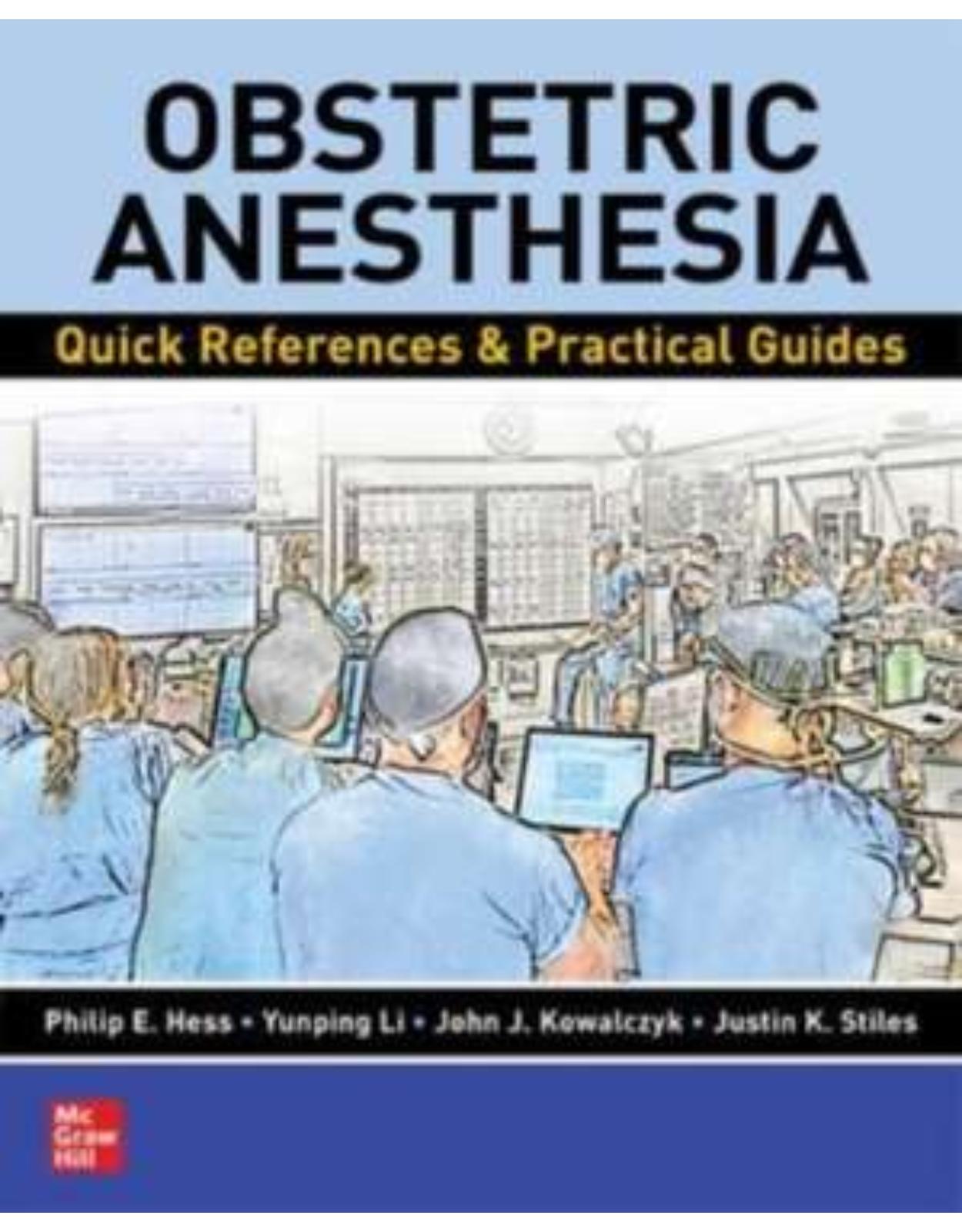
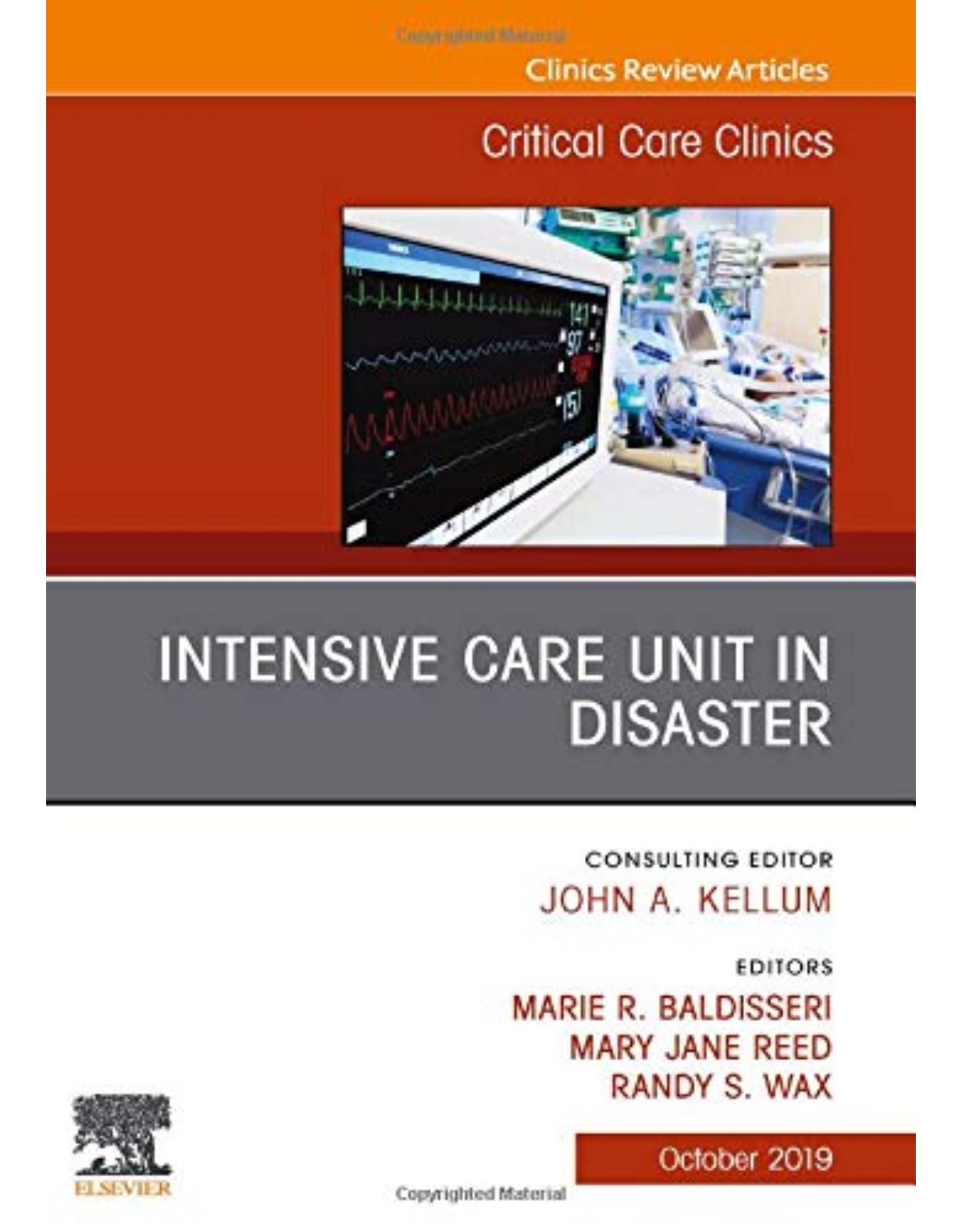
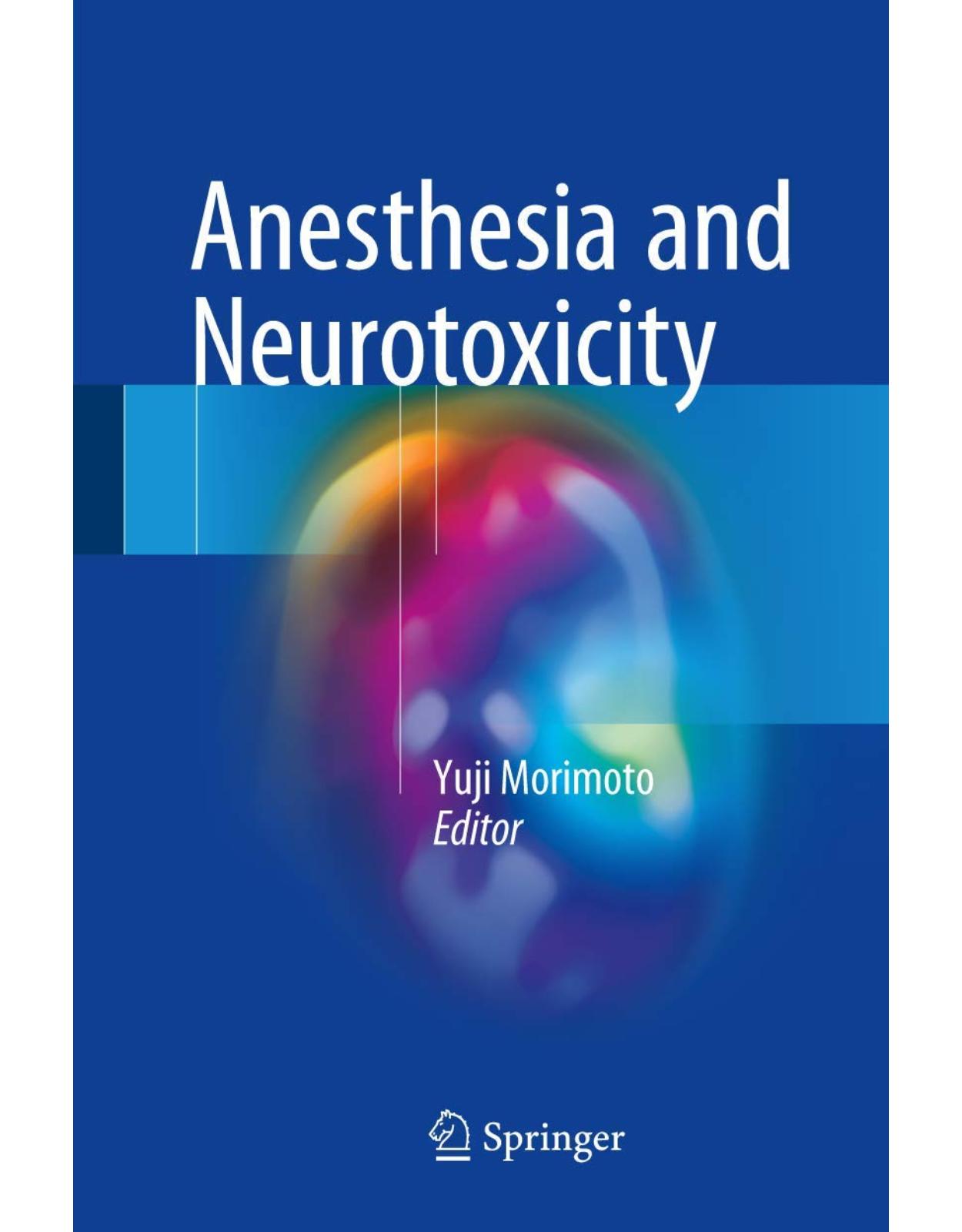

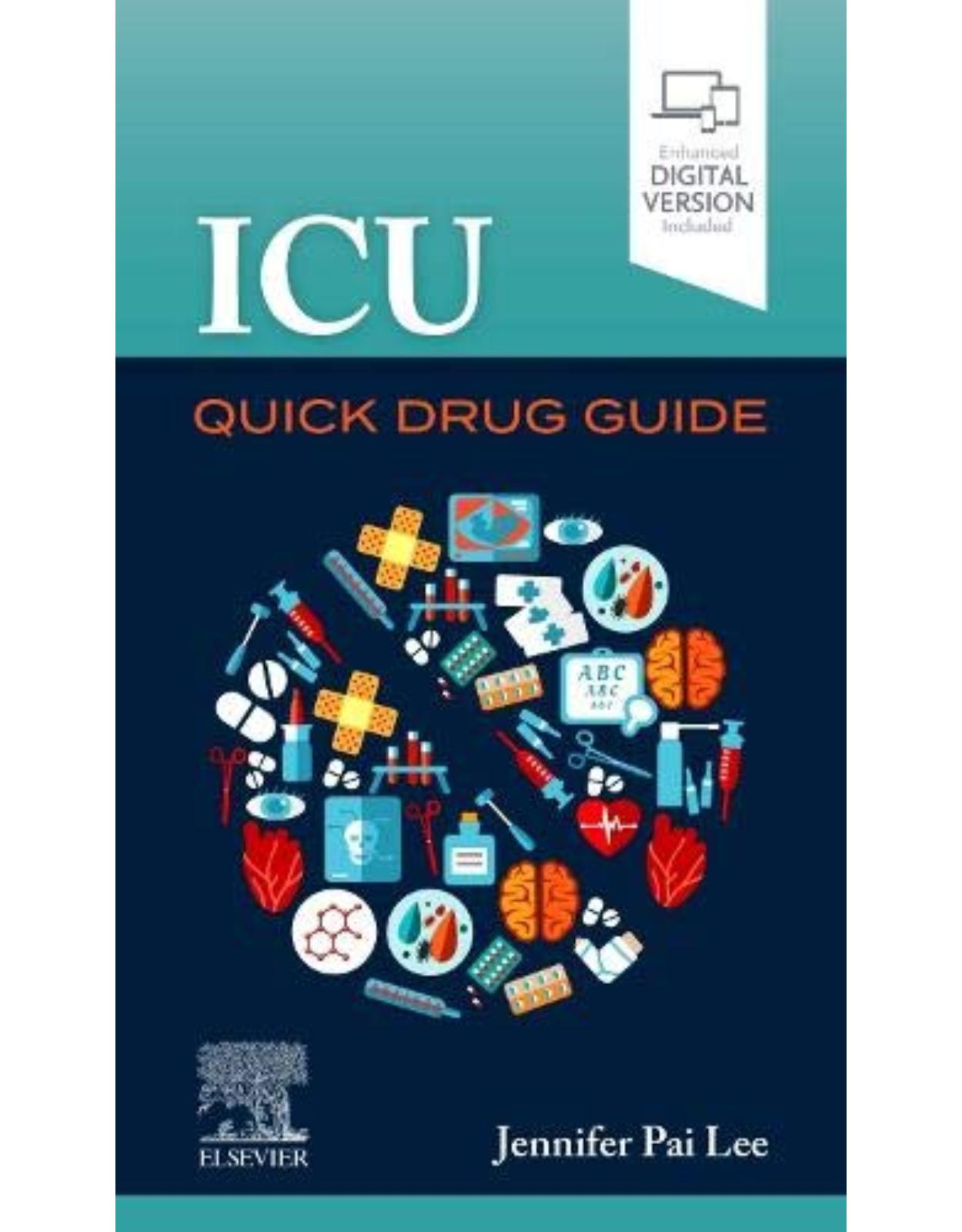
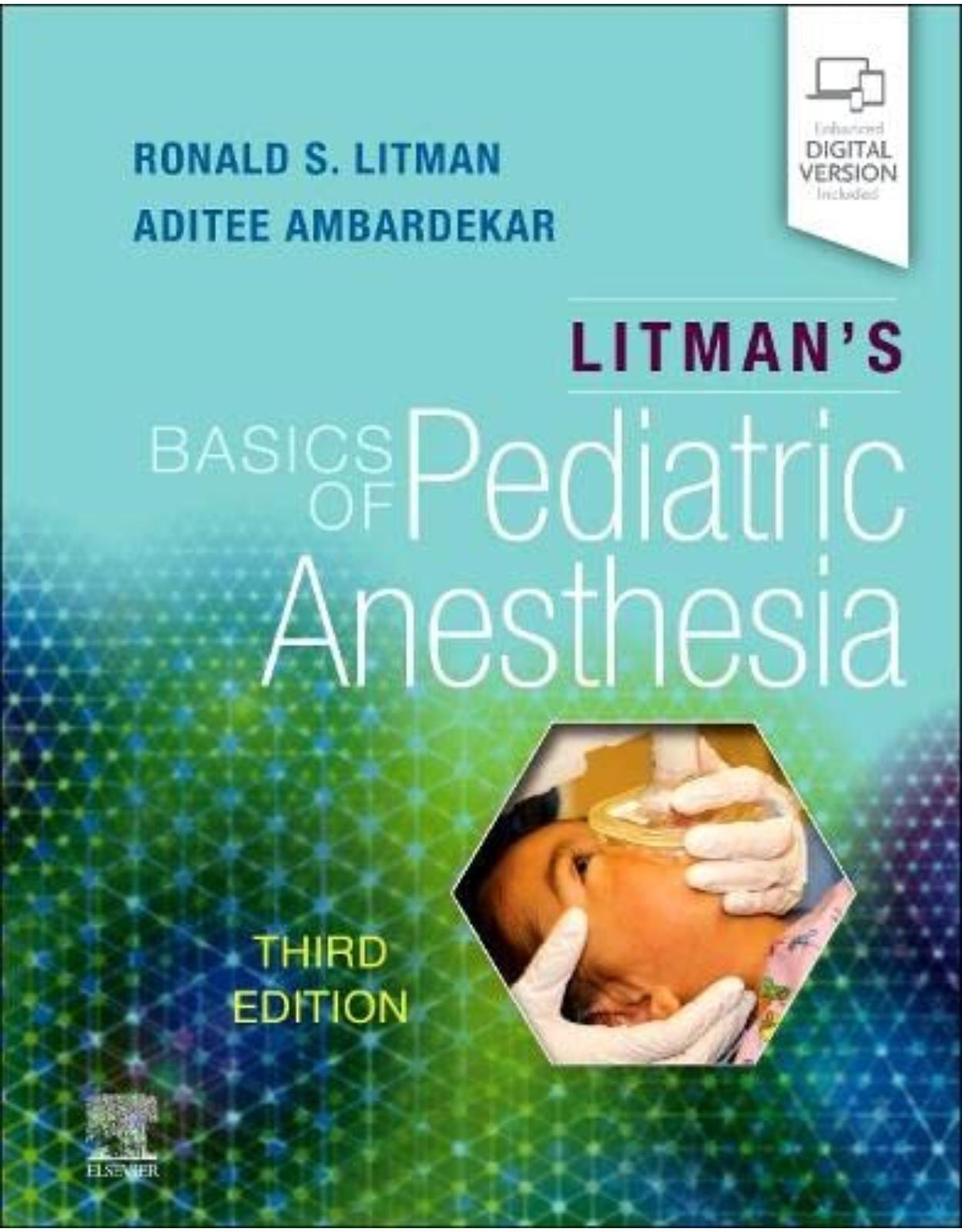
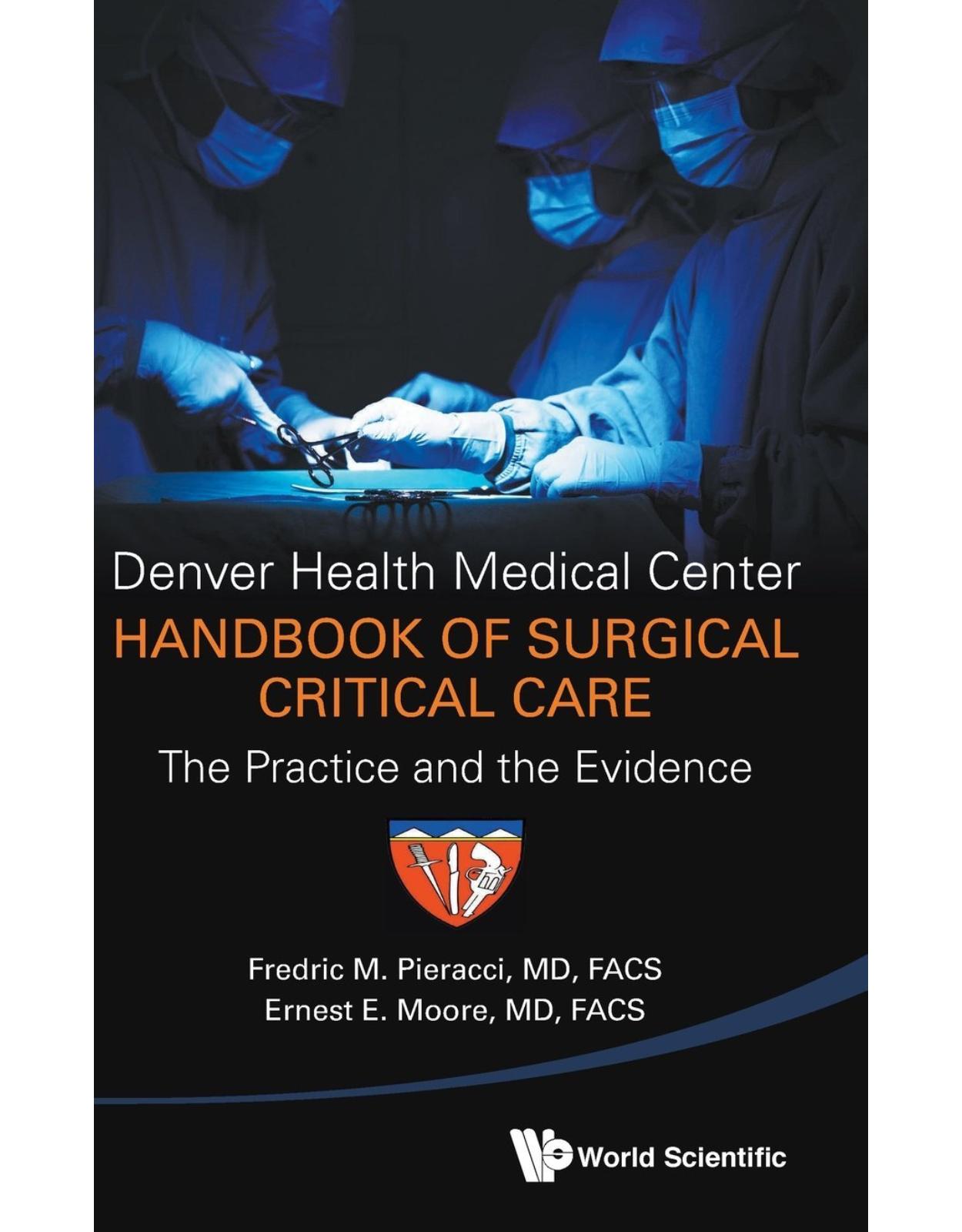
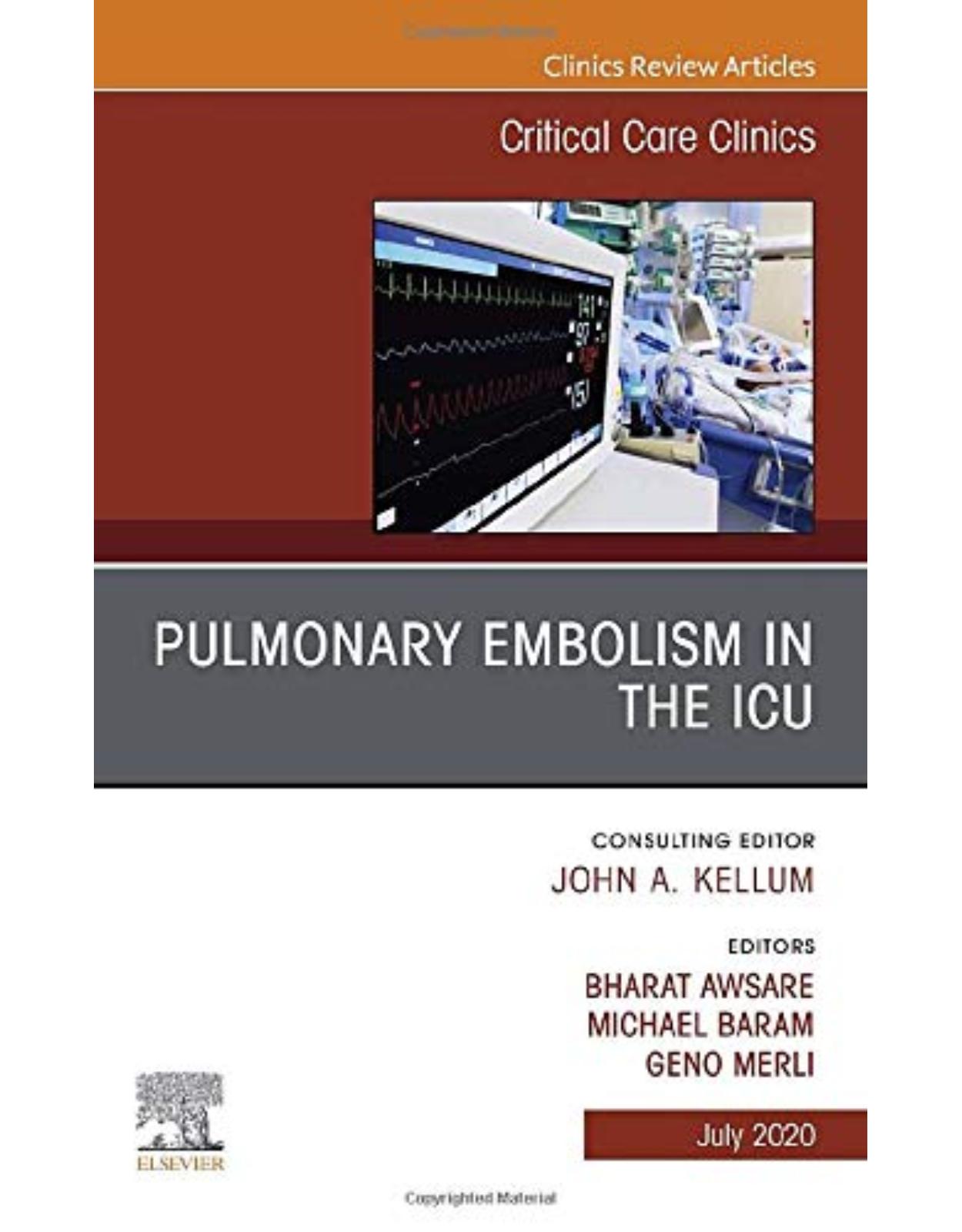
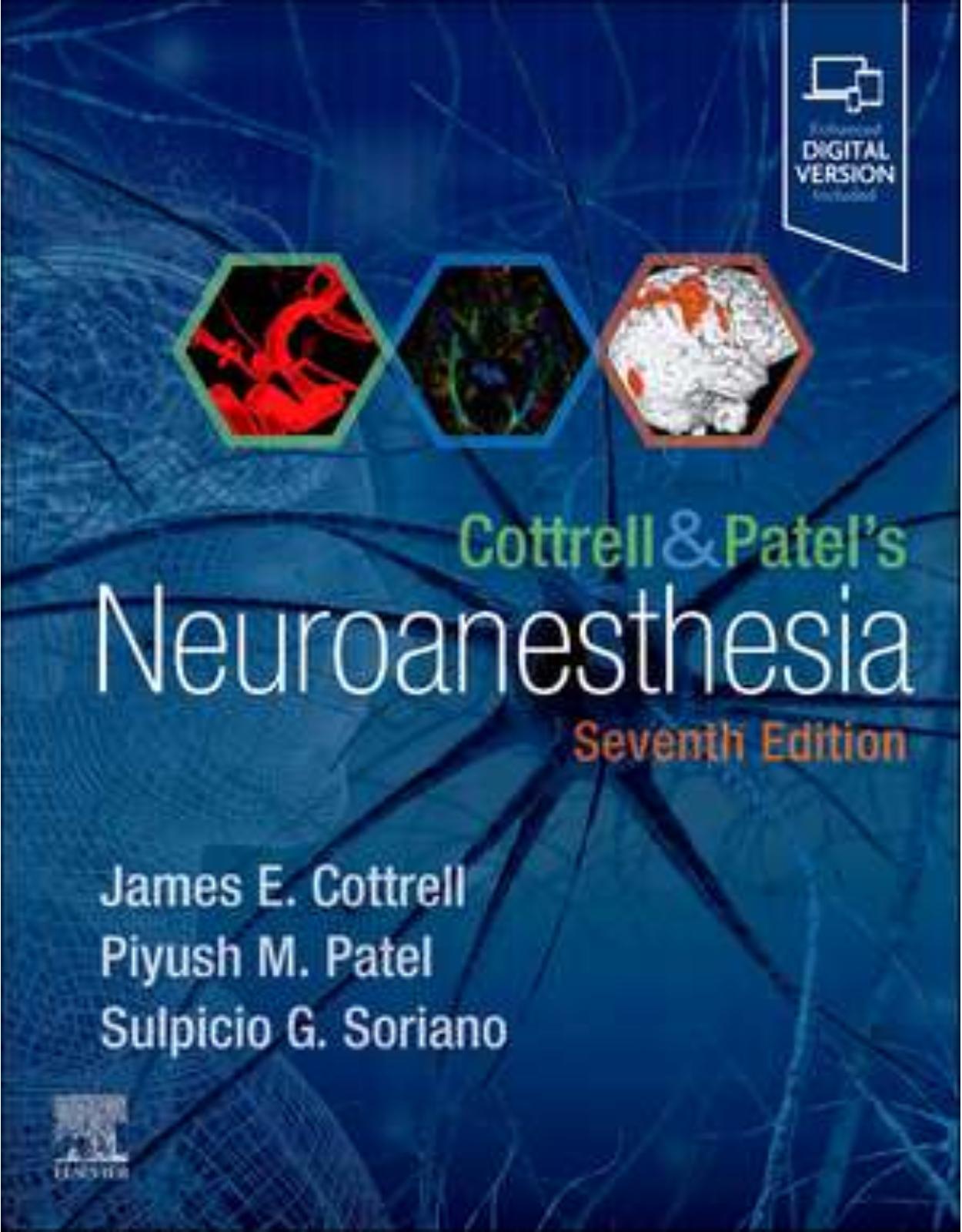
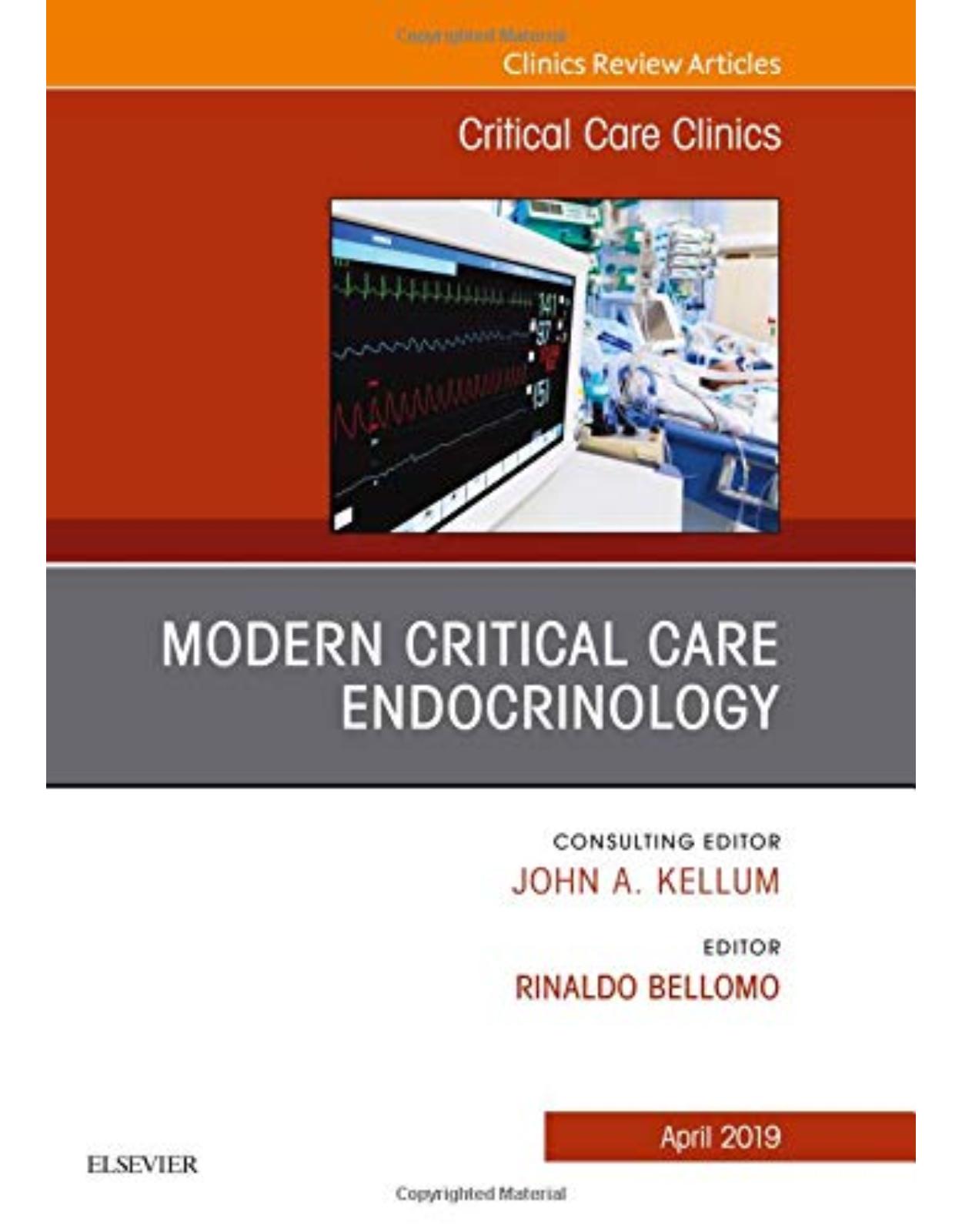
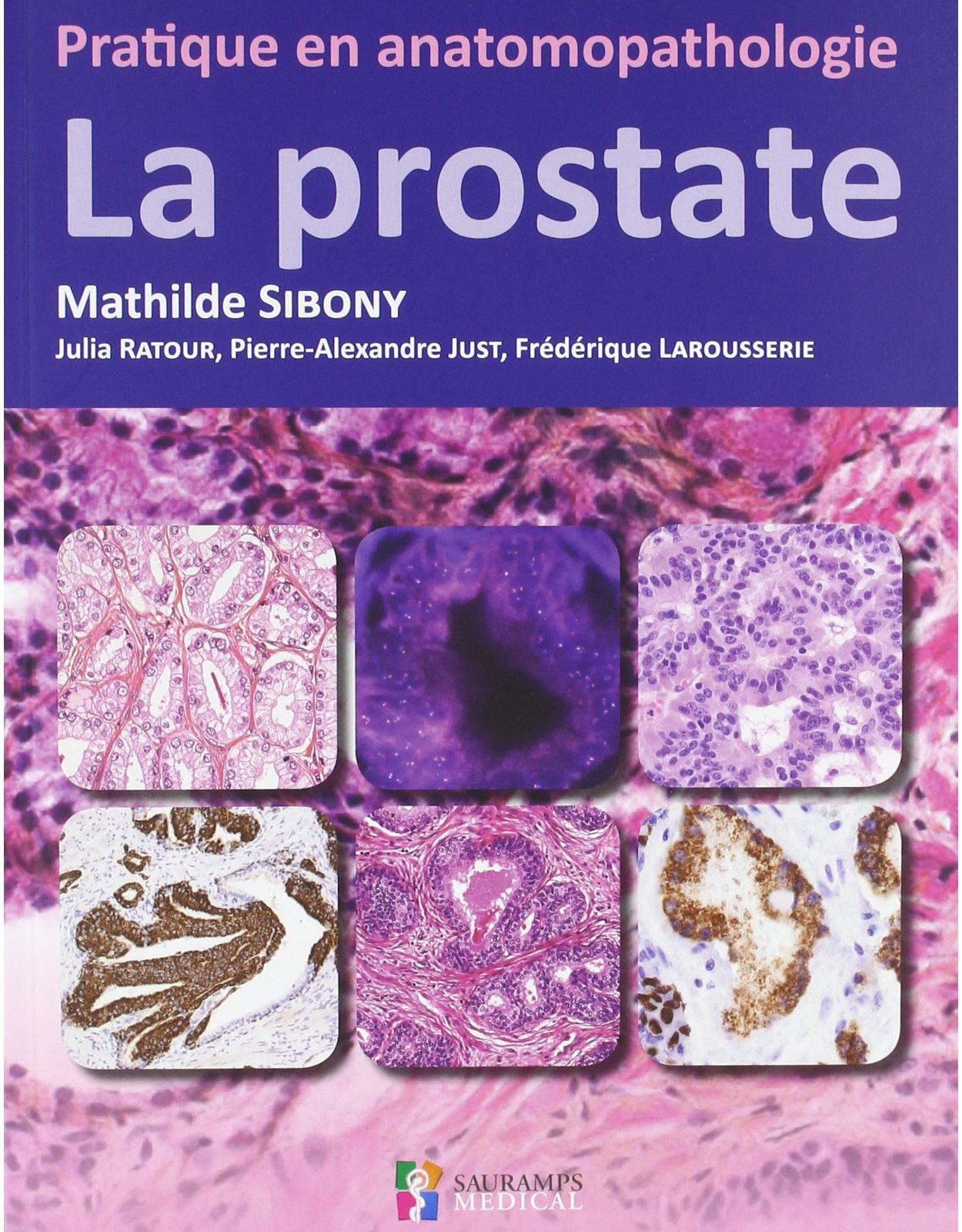
Clientii ebookshop.ro nu au adaugat inca opinii pentru acest produs. Fii primul care adauga o parere, folosind formularul de mai jos.